



Sparks Magazine is a collaborative project between students at the University of Central Florida, University of Florida, and the University of South Florida. Sparks Magazine at USFTM thanks the following student teams for their contributions to this issue.
Sparks Magazine is a collaborative project between students at the University of Central Florida, University of Florida, and the University of South Florida. Sparks Magazine at USFTM thanks the following student teams for their contributions to this issue.
UNIVERSITY OF FLORIDA
UNIVERSITY OF FLORIDA
EDITOR-IN-CHIEF Loryn Smith
EDITOR-IN-CHIEF Loryn Smith
MANAGING EDITOR Aliza Ahmed
MANAGING EDITOR Aliza Ahmed
FINANCIAL DIRECTOR Marium Abdulhussein
FINANCIAL DIRECTOR Marium Abdulhussein
COPY EDITOR Karen Zhang • Yeleeya Li • Justin Fernandez • Leila Wickliffe • Sabrina LaVopa
COPY EDITOR Karen Zhang • Yeleeya Li • Justin Fernandez • Leila Wickliffe • Sabrina LaVopa
DESIGN
EDITOR Elyza Navarro
• Kate Lynne Pudpud
DESIGN EDITOR Elyza Navarro • Kate Lynne Pudpud
• Madison Edwards
• Madison Edwards
PHOTO EDITOR Refat Roja • Kat Tran
PHOTO EDITOR Refat Roja • Kat Tran
PUBLIC RELATIONS DIRECTOR Michi Tang • Ellie Uchida-Prebor
PUBLIC RELATIONS DIRECTOR Michi Tang • Ellie Uchida-Prebor
WRITERS Abby Renger • Aize Hassan • Ananya Pradhan • Mahima Kedlaya • Maria Juliana Tady
WRITERS Abby Renger • Aize Hassan • Ananya Pradhan
• Mahima Kedlaya • Maria Juliana Tady • Morgan Hurd • Naomi Patel
Sienna Chien
Zainab Nawaz
Morgan Hurd • Naomi Patel • Sienna Chien • Zainab Nawaz
DESIGNERS Ceyan Ang
Divya Somayaji • Jackie Truong • Jennifer Jia • Joy Chen • Maya Rudo • Shiyin Hong
Skylar Rosario • Tina Mei • Zarin Ismail
DESIGNERS Ceyan Ang • Divya Somayaji • Jackie Truong • Jennifer Jia • Joy Chen • Maya Rudo • Shiyin Hong • Skylar Rosario • Tina Mei • Zarin Ismail
PHOTOGRAPHERS Andrea Sison • Anushka
Raviprasad • Christina Nguyen • Eddy Chen • Haley
PHOTOGRAPHERS Andrea Sison • Anushka Raviprasad • Christina Nguyen • Eddy Chen • Haley
Desai • Julia Lin • Leanne Lucas • Rayvin Velasco
Desai • Julia Lin • Leanne Lucas • Rayvin Velasco
PUBLIC RELATIONS Brian Paz
PUBLIC RELATIONS Brian Paz
Valenzuela
Valenzuela • Colin Strom
• Cathleen
• Cathleen
• Colin Strom • Emma Salcedo • Isana Schroder • Maika Huynh • Nam Tran
• Emma Salcedo • Isana
Schroder • Maika Huynh • Nam Tran
NATIONAL BOARD
NATIONAL BOARD
EXECUTIVE DIRECTOR Jason Liu
EXECUTIVE DIRECTOR Jason Liu
CHAPTER DEVELOPMENT DIRECTOR Aleem Waris
CHAPTER DEVELOPMENT DIRECTOR Aleem Waris
MARKETING DIRECTOR Sally Zhu
MARKETING DIRECTOR Sally Zhu
CHAPTER MANAGERS Samia Alamgir
CHAPTER MANAGERS Samia Alamgir
SENIOR GRAPHIC DESIGNER Esther Zhan
SENIOR GRAPHIC DESIGNER Esther Zhan
WEB DEVELOPER Chris Tam
WEB DEVELOPER Chris Tam
UNIVERSITY OF CENTRAL FLORIDA
UNIVERSITY OF CENTRAL FLORIDA
EDITOR-IN-CHIEF Liana Progar
EDITOR-IN-CHIEF Liana Progar
MANAGING EDITOR Norah Layne
MANAGING EDITOR Norah Layne
COPY EDITOR Jolina Jassal • Medha Medicherla
COPY EDITOR Jolina Jassal • Medha Medicherla
LEAD DESIGNER Maliha Versi
LEAD DESIGNER Maliha Versi
LEAD PHOTOGRAPHERS Liana Progar • Norah Layne
LEAD PHOTOGRAPHERS Liana Progar • Norah Layne
PUBLIC RELATIONS MANAGERS Kaylee Duong • Jamie To
PUBLIC RELATIONS MANAGERS Kaylee Duong • Jamie To
WRITERS Jenna Ho • Teresina Follone • Samanthaka Nandam • Ibrahim Itani • Jolina Jassal • Liana Progar
WRITERS Jenna Ho • Teresina Follone • Samanthaka Nandam • Ibrahim Itani • Jolina Jassal • Liana Progar
DESIGNERS Alyssa Mugavero • Arianna Flores • Liana Progar • Maliha Versi • Medha Medicherla
DESIGNERS Alyssa Mugavero • Arianna Flores • Liana Progar • Maliha Versi • Medha Medicherla
PHOTOGRAPHERS Olivia Kondraschow • Ryan Baez
PHOTOGRAPHERS Olivia Kondraschow • Ryan Baez
• Norah Layne • Liana Progar
• Norah Layne • Liana Progar
PUBLIC RELATIONS Jenna Ho • Teresina Follone • Breanna Pham
PUBLIC RELATIONS Jenna Ho • Teresina Follone • Breanna Pham
COVER
COVER
PHOTO Kaniz Angel
PHOTO Kaniz Angel
MODELS Mridula Singh • Khoi Vu
MODELS Mridula Singh • Khoi Vu
DESIGN Amreen Naveen
DESIGN Amreen Naveen
FOLLOW US ON SOCIAL MEDIA
FOLLOW US ON SOCIAL MEDIA
FACEBOOK @USFSparks
FACEBOOK @USFSparks
INSTAGRAM @usf_sparks_mag
INSTAGRAM @usf_sparks_mag
TWITTER @usf_sparks_mag
TWITTER @usf_sparks_mag
sparks-mag.com
sparks-mag.com
•
•
•
•
•































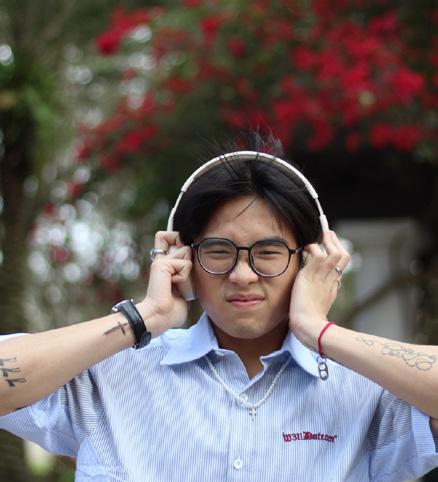








Sparks Magazine at USF E-Board & Staff E-Board: EDITOR-IN-CHIEF Amy Pham • MANAGING EDITOR Quyen Tranh • CONTENT EDITOR Rohit Veligeti FINANCE DIRECTOR Fariah Ansari • DESIGN EDITOR Amreen Naveen • PROMOTIONS DIRECTOR Ishita Sen PROGRAMMING DIRECTOR Yasaswi Nimmagadda • PHOTOGRAPHY EDITOR Kaniz Angel Staff: WRITER Aditi Ragothaman • DESIGNER Daniella Kate Abaquita • WRITER Alphy Maria Antony PHOTOGRAPHER Jayce Jiang • WRITER Anushri Gade • DESIGNER Dat Pham • WRITER Deeksha Sridher PHOTOGRAPHER Khoa Hoang • WRITER/DESIGNER Merita Mary Thomas • WRITER Mridula Singh DESIGNER Khoi Vu • WRITER Nimrit Doad Sparks Magazine at USF E-Board & Staff E-Board: EDITOR-IN-CHIEF Amy Pham • MANAGING EDITOR Quyen Tran • CONTENT EDITOR Rohit Veligeti FINANCE DIRECTOR Fariah Ansari • DESIGN EDITOR Amreen Naveen • PROMOTIONS DIRECTOR Ishita Sen PROGRAMMING DIRECTOR Yasaswi Nimmagadda • PHOTOGRAPHY EDITOR Kaniz Angel
WRITER Aditi Ragothaman • DESIGNER Daniella Kate Abaquita • WRITER Alphy Maria Antony PHOTOGRAPHER Jayce Jiang • WRITER Anushri Gade • DESIGNER Dat Pham • WRITER Deeksha Sridher PHOTOGRAPHER Khoa Hoang • WRITER/DESIGNER Merita Mary Thomas • WRITER Mridula Singh DESIGNER Khoi Vu • WRITER
Doad
Staff:
Nimrit












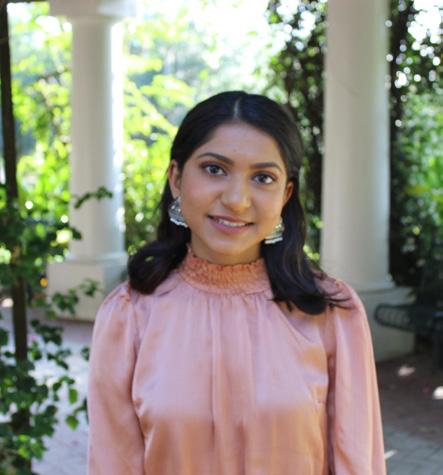









Sparks Magazine at USF E-Board & Staff
Sparks Magazine at USF E-Board & Staff
Staff: DESIGNER Riya Choski • WRITER Ramya Subramanian • DESIGNER Sayuri Gautam • WRITER Reagan Huynh DESIGNER Shifa Shaikh • WRITER Sanjana Nallapati • WRITER Serena Bhaskar • WRITER Vaidehi Persad • DESIGNER Smyrma Davalath • WRITER Shriya Punati • WRITER Ly Vu
Staff: DESIGNER Riya Choski • WRITER Ramya Subramanian • DESIGNER Sayuri Gautam • WRITER Reagan Huynh DESIGNER Shifa Shaikh • WRITER Sanjana Nallapati • WRITER Serena Bhaskar • WRITER Vaidehi Persad • DESIGNER Smyrma Davalath • WRITER Shriya Punati • WRITER Ly Vu

Letter From The Editor
Letter From The Editor
Dear Reader,
Welcome to Sparks Magazine. I am so thrilled to be
Welcome to Sparks Magazine. I am so thrilled to be introducing Issue 26!


When I first started drafting this issue’s Letter from the Editor, I kept coming back to my blank Word doc ument head empty, a feeling I’m sure each of you has felt at some point this year. I struggled to find the words that encapsulated all that Sparks and this issue means to me. After much reflection, I eventually
When I first started drafting this issue’s Letter from the Editor, I kept coming back to my blank Word document head empty, a feeling I’m sure each of you has felt at some point this year. I struggled to find the words that encapsulated all that Sparks and this issue means to me. After much reflection, I eventually figured it out.
Sparks embodies many things to me – the excitement of publishing my first article, the thrill of brainstorming cover ideas, the fulfillment of being a part of the evo lution of your work. But most of all, Sparks represents the voices of our community. Through my time with Sparks, I have found a community of creatives, Studio Ghibli fans, poets, plushie lovers, crochet learners,
Sparks embodies many things to me – the excitement of publishing my first ar ticle, the thrill of brainstorming cover ideas, the fulfillment of being a part of the evolution of your work. But most of all, Sparks represents the voices of our community. Through my time with Sparks, I have found a community of creatives, Studio Ghibli fans, poets, plushie lovers, crochet learners, pun-makers, advocates, and more.


Every piece written, every design crafted, and every photo taken within this issue captures the voice of its creator. It’s these pieces of themselves that our mem bers share with us that define the essence of Sparks. They transform our magazine from a collection of words and art into a reflection of our identities, experi ences, and passions.
Every piece written, every design crafted, and every photo taken within this issue captures the voice of its creator. It’s these pieces of themselves that our members share with us that define the essence of Sparks. They transform our magazine from a collection of words and art into a reflection of our identities, experiences, and passions.
To my executive board and staff, thank you for allow ing me to become a part of uplifting your voices. This issue has been a labor of love, and I am so thankful that you all were with me throughout this journey. It was an honor to serve as your Editor-in-Chief, and I am so excited to see how Sparks Magazine trans forms as you each add your unique story to its pages.
To my executive board and staff, thank you for allowing me to become a part of uplifting your voices. This issue has been a labor of love, and I am so thankful that you all were with me throughout this journey. It was an honor to serve as your Editor-in-Chief, and I am so excited to see how Sparks Magazine transforms as you each add your unique story to its pages.
I hold this issue close to my heart, not only because it marks my final year with Sparks Magazine, but because it is a testament to the spirit of our community. It is a manifestation of the friendships, moments, and
I hold this issue close to my heart, not only because it marks my final year with Sparks Magazine, but because it is a testament to the spirit of our communit y. It is a manifestation of the friendships, moments, and growth we have shared together.

As you flip through the pages of Issue 26, I hope you can hear our voices.
As you flip through the pages of Issue 26, I hope you can hear our voices.
All my love,
Amy Pham Editor-in-Chief



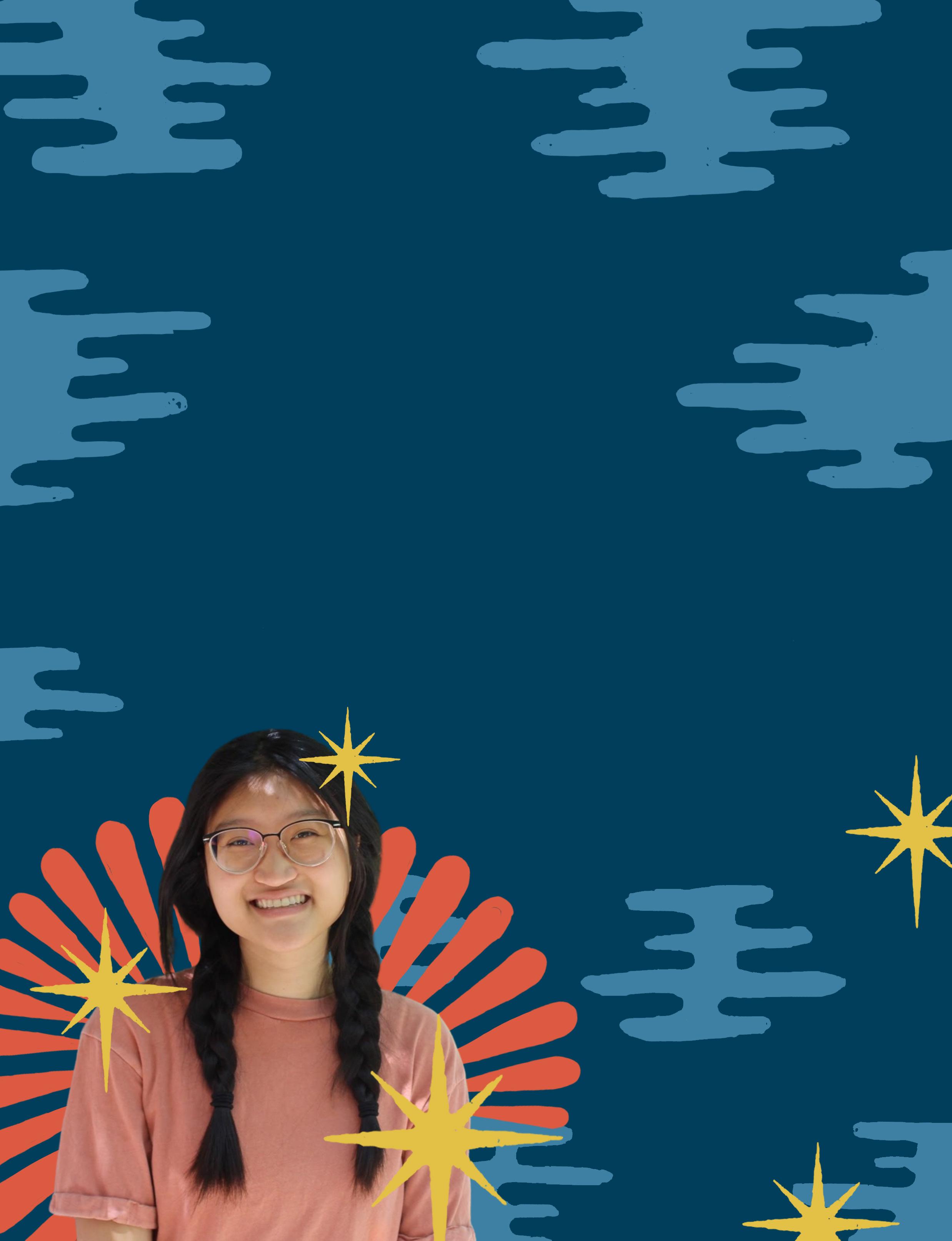

Dirt and Bone
Shriya Punati
Samosas and Sweet Tea: Bittersweet Love for the American South
Vaidehi Persadi
Malayalam Cinema
Merita Thomas
When a Viet American Meets a Vietnamese
Ly Vu Motherland
Serena Bhaskar
The Uncomfortable Growth Department
Nimrit Doad A Whole New World Deeksha Sridher From
the
to
of Yoga
Language Odyssey Quyen Tran 8 12 13 16 18 19 20 22 25 28
River
the Sea Fariah Ansari Essence
Ramya Subramanian My
Table of Contents

Unwoven Loose Threads of Tradition Sanjana Nallapati Become an Asian Grandma Today! Reagan Huynh Fear of Home Mridula Singh Hey Barbie Yasaswi Nimmagadda Wisteria Valley Ly Vu Disconnect Mridula Singh Notes Slipped into a Jewelry Box Anushri Gade Roots and Rituals: The Beauty of South Indian Weddings Aditi Ragothaman Diversity or Doom? Jolina Jassal, Contribution from UCF Sparks Magazine Chic & Covered: Modesty in Fashion Sainab Nawaz, Contribution from UF Sparks Magazine Humans of Sparks Khoa Hoang 30 32 34 36 38 40 42 44 46 48 50 Table of Contents
Dirt anD Bone
Her father had always warned Mahi about the mountains.
Bewaryofthestars, he would say, foryouwill besoveryclosetothem,upinthoseclouds,and theyarerarelyinclinedtokindness.
Her father waxed on and on about the stars, great golden beings with little fondness for humans. They were prone to petty pranks, and so when they did choose to come down from their perch in the sky, it was seldom with good intentions.
Yes, well. He said lots. And although Mahi knew her father only had the best of intentions, she paid his words little heed. The stars had never bothered her before, and Mahi was no stranger to the mountains.
Every day, she would walk from her little village, up over the towering green mountains, and into the neighboring town where she was to perform. Mahi was an excellent dancer. Extraordinary. Enough that she was famed beyond just her village, and so though she wasn’t exactly elusive, she was always anticipated. For good reason, too– Mahi put on these magnificent, extravagant shows, her eyes dark with kohl, bangles clinking around her arms, all fleeting smiles and colored silks. Among the drabness of the cotton common to the town, she stood out like a butterfly pinned to glass.
to dip below the horizon, and her bag was full and heavy with coins. Every day, without fail, she came and went. In rain, in sickness, in health, in hurt.
And yet, through all those days, in all her years up and down those mountains, path true and tried, she’d never, not once, not a star.
Never, that is, until she does.
It happens on a sunny day, the sky blue and spattered with puffy clouds. It’s early in the morning and Mahi is already running unfashionably late, so this certainly isn’t helping.
She scratches at her head.
Even with all that her father had told her, she’d never quite been able to comprehend what it might mean to be a star. The one in front of her is shockingly human-looking, admittedly despite being covered in golden scales and twinkling jewels. She supposes, nonetheless, that she should be a bit more surprised. Stunned, even.
Much more pressingly to her, however, is the necklace he holds in his hands.
“That’s mine,” she says, fixing him with a frown. “It belongs to me.”
“I’m a star,” he says back, as if that’s explanation enough.
by Shriya Punati design/Khoi
People were drawn to her, enchanted into emptying their pockets at her feet. So, Mahi danced and danced, until the sun began
“I know. That’s still my necklace.”

He looks a bit befuddled. “I don’t think you
“Perhaps not.” She rubs at the column of her throat, looking at him reproachfully. “Did you really have to yank it from off my neck? You’ve
“I– well, does it matter? I have it now.”
“That’s not–” she breaks off, throwing up her hands in exasperation. “Why’d you even take
The star feels a bit bad, and he’s not quite sure what to do with that. Yes, sure, he’s young, but he’s been down here plenty of times– only the humans he’d met usually sort of just gave him what he wanted and ran as soon as they could. He reckons that they thought he might eat them, which is ridiculous. No one wants to eat a human.








8 | spring 2024
Vu

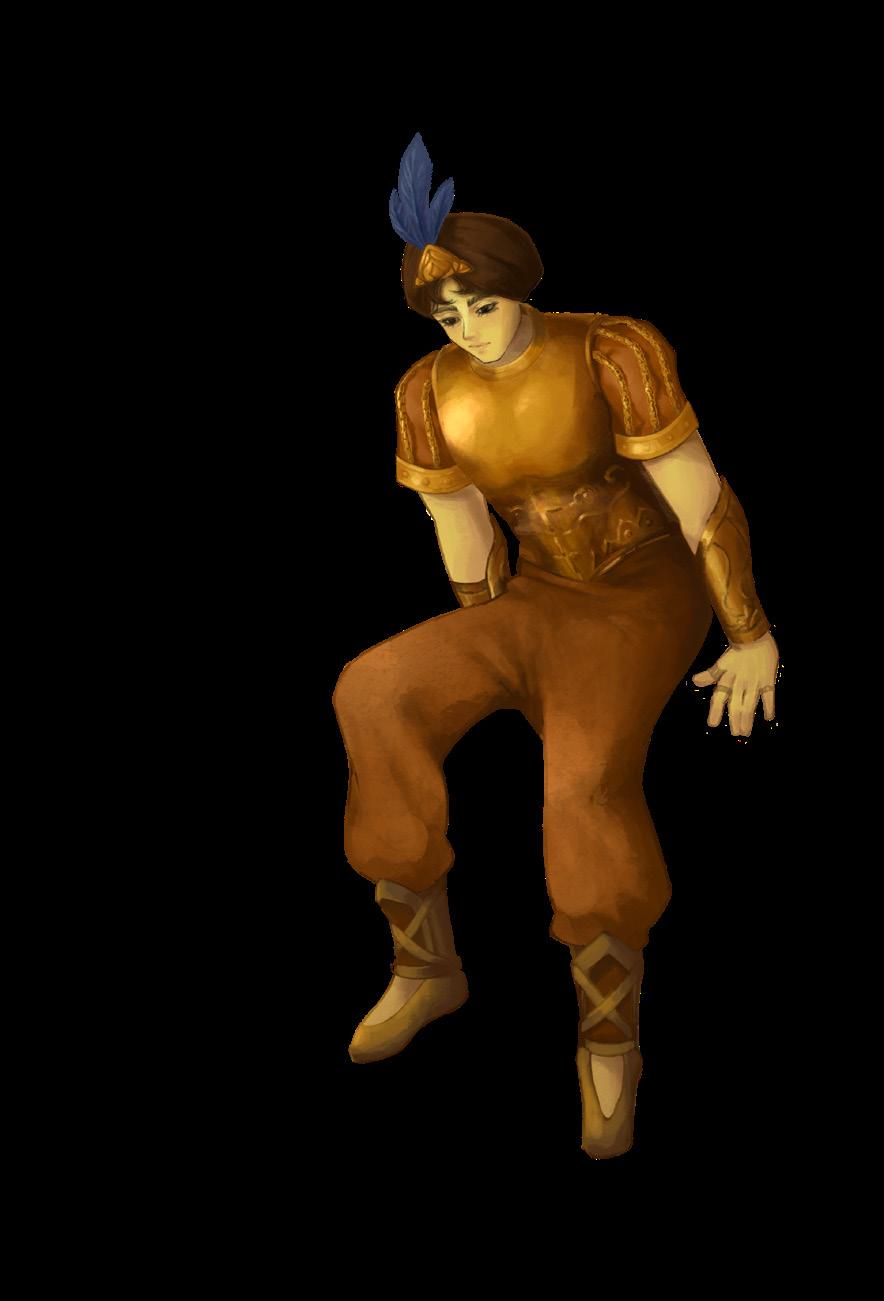
course he does. She’s only human, after all, and he is a star. And so maybe she hasn’t realized it yet, in all her many imperfections, that this world is cruel, and you must be cruel with it.
He grins at her. “I think you forget. I’ve seen a thousand dances and a thousand girls.”
“Maybe.” Mahi’s smile crooks, conspiratorial. “But you haven’t seen me.”
The star can’t help but scoff. “I suppose I
jarring, nothing like the twist of her hands and the curve of her spine. Her eyes are wide, rimmed with kohl, and they speak:
Onceuponatime,akingandhislover.Long, longago,apoorwomanprayed.Inadifferentlife,a girllookedup.
He falters, song sputtering, and stares, transfixed. It doesn’t matter that there’s no music. She’s dancing, hair like a blot of ink, wrapped around







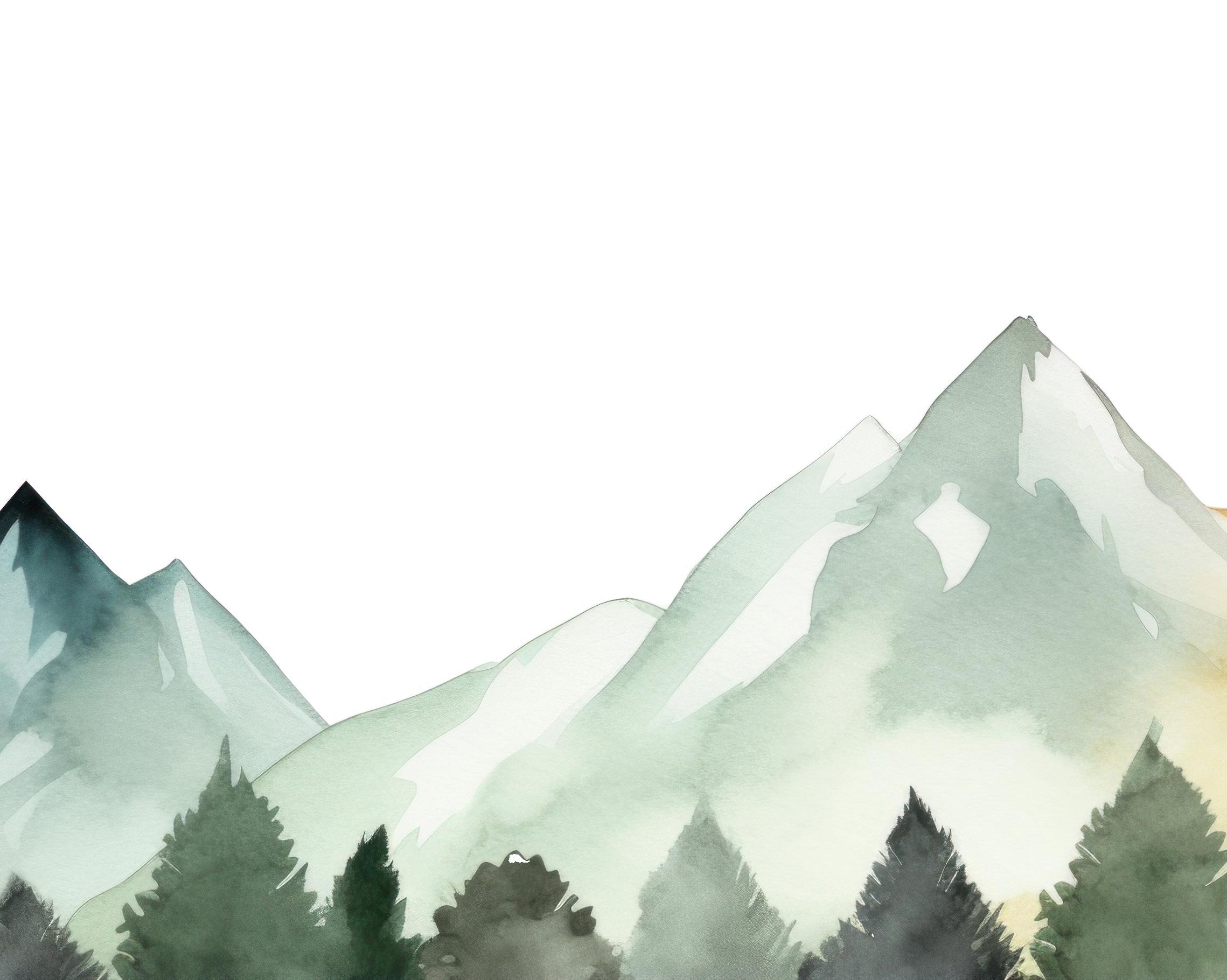

spring 2024 | 9

times must I repeat myself?,” she repetitive request. and friends always That was the day might be different . abnormal. These seldomly faced by





10 | spring
2024

request. My family always said, “Sure.” I realized that I different . . . unusual . . These emotions are by 9-year-olds and of ‘treatments’ I have received by


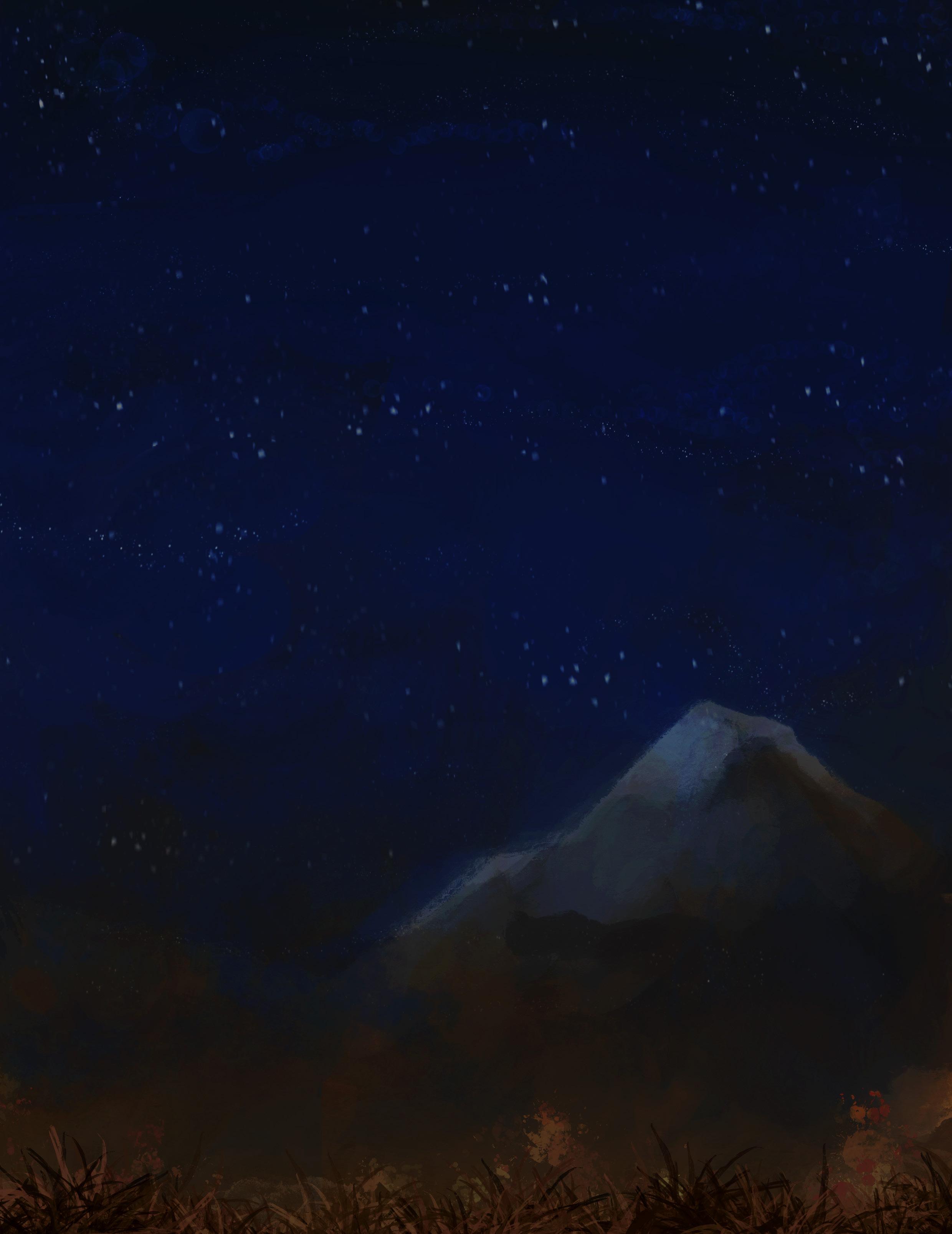

spring 2024 |
Sanikaa Thakurdesai design/Daniela
TSamosas and Sweet Tea
Bittersweet Love for the American South
he scent of sandalwood incense crawls under the crease beneath my bedroom door and I know my day is about to begin. It’s 4 A.M. I still have another hour of sleep left, but I can hear my dad begin reciting in Sanskrit and a small bell ringing to purify our home.
A few hours later, and it’s still dark, but I’m on the school bus. The perfume of orange blossoms and dewy grass waft in through my open bus window. The sun starts rising over the foggy morning. Orange fields extend as far as I can see. The sight reminds me of my first impromptu driving lesson, ending with me getting towed out of the sugar sand of a nearby orange grove. It’s 7 A.M. and there is a faint sound of church bells ringing in the distance. Another pleasant invocation of the day ahead.
We pass acres of farmland and cattle pastures, a subtle reminder of my place - skinny vegetarian kid takes on another day in beef country. Soon enough, the high school is in sight.
Across the road is our football stadium parking lot where the local gun show has packed up and been replaced with the town fair.
I still remember line dancing to Cotton-EyeJoe in the nearby fairground convention center, feeling more like I was at a country hoedown in heels, than at a high school homecoming. A giraffe and three llamas stare at me awkwardly now, circus animals seeming out-of-place in this small-town Florida fair. I look back understandingly.
I don’t drink sweet tea with my samosas, and I’m certainly not a holy-rolling southern belle. Perhaps I haven’t fallen in love with the American South the way some South Asians have, but I do have a weakness for the Blues and Soul, scattered between the Ghazals and Bollywood songs in my playlist. Church bells, canopies of oak trees covered with Spanish moss, and winding dirt roads still make me feel nostalgic of home.
My relationship with the American South, which for all intents and purposes includes my hometown in rural Florida, is bittersweet.
You might ask how I ended up among the gator-catchin’, hurricane-chasin’, country-lovin’, through-and-through residents of America’s Sunshine State. Here’s how: my family belongs to the Indo-Caribbean diaspora. About one century ago, my ancestors were coerced by the British from their villages in rural India, and forced onto boats that sailed all the way to the Caribbean Sea. They were brought as indentured servants to provide labor cutting sugar cane in the fields. My great-great grandparents and their descendants created their own lives and histories in Trinidad, a tropical island off the coast of Venezuela, where my parents lived their childhoods before immigrating to Canada in the late 1980s. While I was born in Canada, my parents left soon after, settling in the most tropics-adjacent state they found: Florida.
Although the majority of my conscious life has been in Florida, the movement and community-building of all the people who came before me still remains an important part of my identity and who I am. My strong sense of place and value for community has blended well with the southern hospitality characteristic of my hometown. Much of my family’s culture and customs seem to run parallel with the other town folk like the centrality of faith or the warm welcome of others to our home. These similarities, at times, have helped make my place in rural Florida feel more like home.
The people in my hometown are kind. Many of them, I know, hold beliefs that will never truly accept people like me, who look differently or pray differently from them. Despite this, many of them will routinely say good-morning or offer a helping hand without thinking twice.
For a while, this can be enough.

 by Writer Vaidehi Persad design/ Designer Amreen Naveen
by Writer Vaidehi Persad design/ Designer Amreen Naveen
12 | spring 2024
Bathed in the lush landscapes of Kerala, a state in the south of India, and whispered through the melodious rhythm of the Malayalam language, the stories of Malayalam cinema began unfolding on my childhood television, weaving a tapestry of emotions and narratives that would shape my understanding of storytelling. These stories, which are rich in narratives involving intricate characters and deep psychological exploration, were often the themes of conversations between my cousins and me. It is no wonder that a majority of people in Kerala are enthusiastic cinephiles, embracing movies from across India and beyond.
Historically, Malayalam cinema remained inactive until the latter half of the 20th century, with few films produced before 1947. However support from the Kerala state government, surged productions from the 1950s onwards. J. C. Daniel, "father of Malayalam cinema," laid the foundation of the industry with, Vigathakumaran (1928), which departs from the conventional mythological themes. Regrettably, this film is lost, as no copy of the film has survived.
In the 1950s, Malayalam cinema thrived with creative innovation, tackling social issues and departing from traditional storytelling with movies like "Neelakuyil" and "Newspaper Boy". The 1960s witnessed further growth, with the films like "Chemmeen" gained national acclaim. The narratives of this era were charac-
terized by themes revolving around caste, class, and societal reform.
In the 1970s, a transformative era emerged in Malayalam cinema, marked by the rise of new wave cinema. This period also witnessed the emergence of parallel cinema as an alternative to mainstream Indian cinema, alongside middle-stream cinema, which is a blend of seriousness with mainstream appeal.
The 1980s and early 1990s marked Malayalam cinema's 'Golden Age', characterized by nuanced storytelling blending humor and melancholy, accompanied by rich cinematography and music. This period also propelled actors like Mammootty and Mohanlal to stardom.
The 1990s, saw acclaimed classics like "Manichitrathazhu" to commercial successes like "Kilukkam" and "Devaasuram." Comedy films starring talents like Jagadish and Sreenivasan surged, while "Guru" garnered international acclaim at Cannes and the Oscars, solidifying Malayalam cinema's global impact.
During the 2000s, Malayalam cinema witnessed a decline in quality, with directors from the Golden Age facing challenges as their films consistently failed both critically and commercially. This period saw a widening gap between parallel cinema (art cinema), and mainstream cinema (commercial cinema). Slapstick comedy dominated the era with
films like "C.I.D. Moosa" and "Meesa Madhavan."
After several years of quality deterioration, the 2010s witnessed a remarkable revival in Malayalam cinema with the advent of New Generation films. The New Generation film movement, featured innovative themes and narrative techniques, diverging from traditional tropes and introducing fresh trends. While influenced by global styles, these films remain deeply connected to Malayalee culture and experiences, leading to international acclaim with hits like "Adaminte Makan Abu".
However, Malayalam movies often remain relatively unknown to audiences outside of Kerala, prompting the remake of many in different regional languages. With the onset of the pandemic, Malayalam cinema adapted by premiering on streaming platforms due to challenges faced by theatrical releases. This shift in distribution methods sparked the interest of movie enthusiasts from various regions, introducing them to the script-driven approach of Mollywood (Malayalam film industry). Many Malayalam films delve into the intricacies of human relationships, exploring themes of love, family, friendship, and community with remarkable sensitivity and depth.
Following are some suggestions to immerse yourself in the world of Malayalam Cinema.


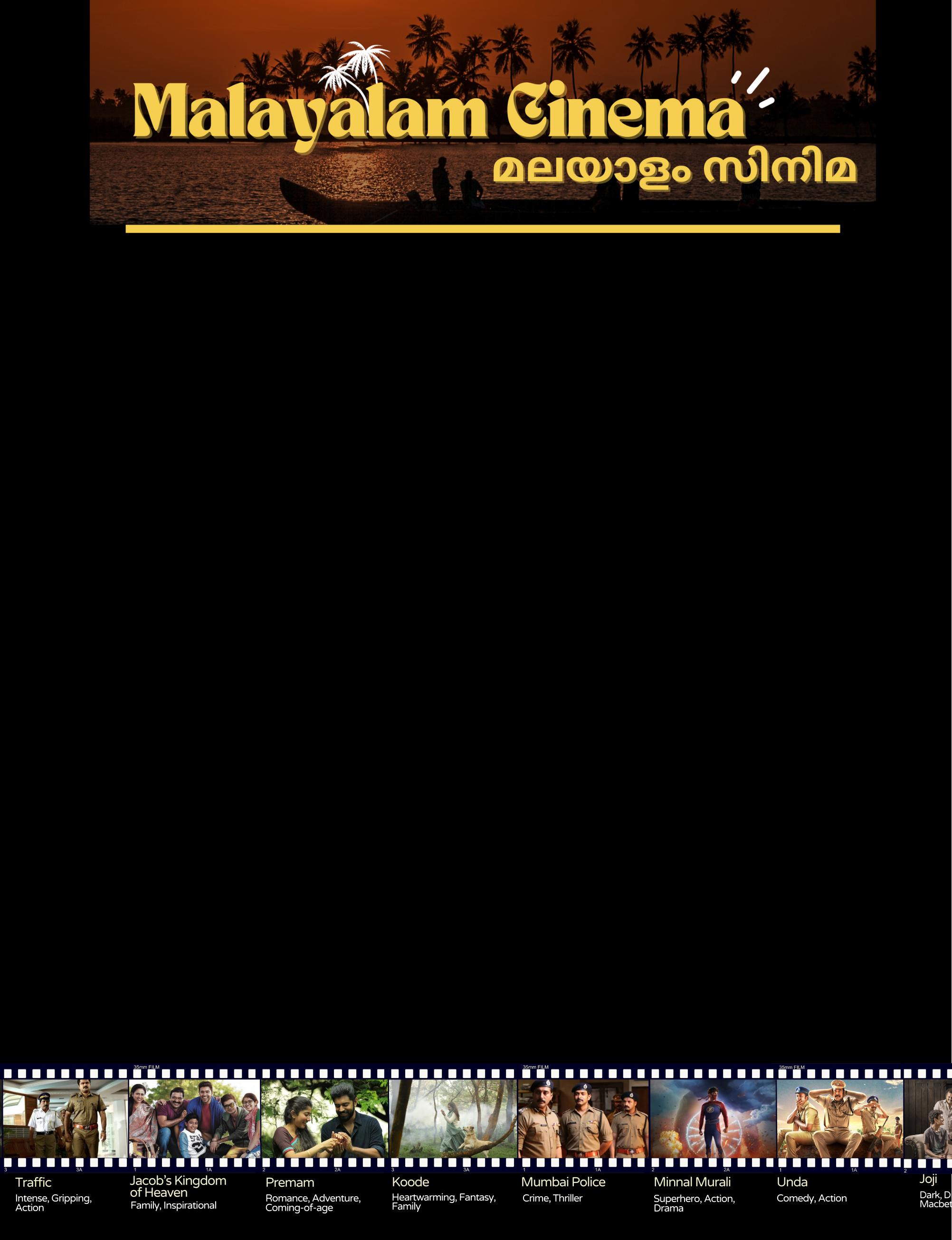
spring 2024 | 13
1 - Manichitrathazhu
Translation: The Ornate Lock
Genre:PsychologicalHorror
Cast:Mohanlal,Shobana
The haunting of a woman by a dancer's spirit in an old mansion. Ganga's character and the iconic song 'Oru Murai Vanthu' remains etched in the minds of Malayali audiences.
2 - Vettam
Translation:Light
Genre:Comedy,Romance
Cast:Dileep,Innocent
Series of misadventures that ensue when a man hires a woman to pose as his fiancée. This is a personal favorite movie of mine, with a lot of veteran actors and good music.
3 - Usthad Hotel
Genre:Romance,Musical
Cast:DulquerSalman,Thilakan
A budding chef returns to his hometown when his father rejects his ambitions, leading him to join his grandfather's hotel to pursue his culinary dreams. The songs in this movie, ‘Appangal Embadum’ and ‘Mel Mel Mel’ are some of my favorites.
4 - The Great Indian Kitchen
Genre: Drama
Cast:NimishaSajayan,Suraj
The film delves into the struggles of women in traditional Indian homes, particularly following a newlywed bride's journey, offering commentary on patriarchy, gender roles, and personal liberation through its compelling performances.
5 - Kumbalangi Nights
Genre: Drama, Romance
Cast: FahadhFaasil,Soubin
Kumbalangi is a scenic village in Kerala, India, known for its traditional fishing community. Four brothers in a dysfunctional household, striving to maintain a sense of family. Its raw depiction of family dynamics, patriarchy, and redemption.
6 - Maheshinte Prathikaram
Translation:Mahesh'sRevenge
Genre:Comedy,Drama
Cast:FahadhFaasil,Aparna
After attempting to resolve a village matter, Mahesh, a photographer, is assaulted by a stranger, igniting a desire for revenge from the perceived insult, weaving humor and heart.
7 - North 24 Kaatham
Translation: North 24 Kilometers
Genre:Adventure,Drama
Cast:FahadhFaasil,NedumudiVenu
A software engineer battling OCD, ventures on a 24 Kaatham road trip across Kerala, that disrupts the comfort of his schedule, encountering characters and experiences that resonate long after the credits.
8 - 2018
Genre:Drama,Survival
Cast:Tovino,AsifAli,Lal
The film portrays the aftermath of the 2018 devastating floods in Kerala, depicting its impact on various regions and people from diverse backgrounds.
9 - Drishyam
Translation: Visual
Genre:Family,Suspense
Cast:Mohanlal,Meena,Siddique
Story of a family who gets caught in a web of lies after a tragic incident. Its masterful storytelling has solidified its status as a modern classic in Indian cinema, having been adapted into six languages since.
10 - Virus
Genre:Medical,Thriller
Cast:Tovino,AsifAli,Parvathy
Based on real events about how Kerala tackled the 2018 Nipah virus outbreak, which claimed 17 lives. It shows how doctors, officials, and ordinary people worked together to contain the virus and save lives.
11 - Manjummel Boys
Genre:Drama,Survival
Cast:Soubin,SreenathBhasi
It depicts the real life-experience of a group of friends from Manjummel, a small town in Kerala, journeying to Kodaikanal, a hill station in Tamil Nadu, India.
12 - Bangalore Dats
Genre:Romance,Comedy
Cast:Nazriya,Dulquer,Nivin
Set in urban Bangalore, childhood cousins fulfill their dream of relocating there. The film beautifully captures friendship, relationships, and family amidst the city’s charms and challenges.


14 | spring 2024



spring 2024 | 15
by Merita Thomas design/ Merita Thomas
When A Viet-American
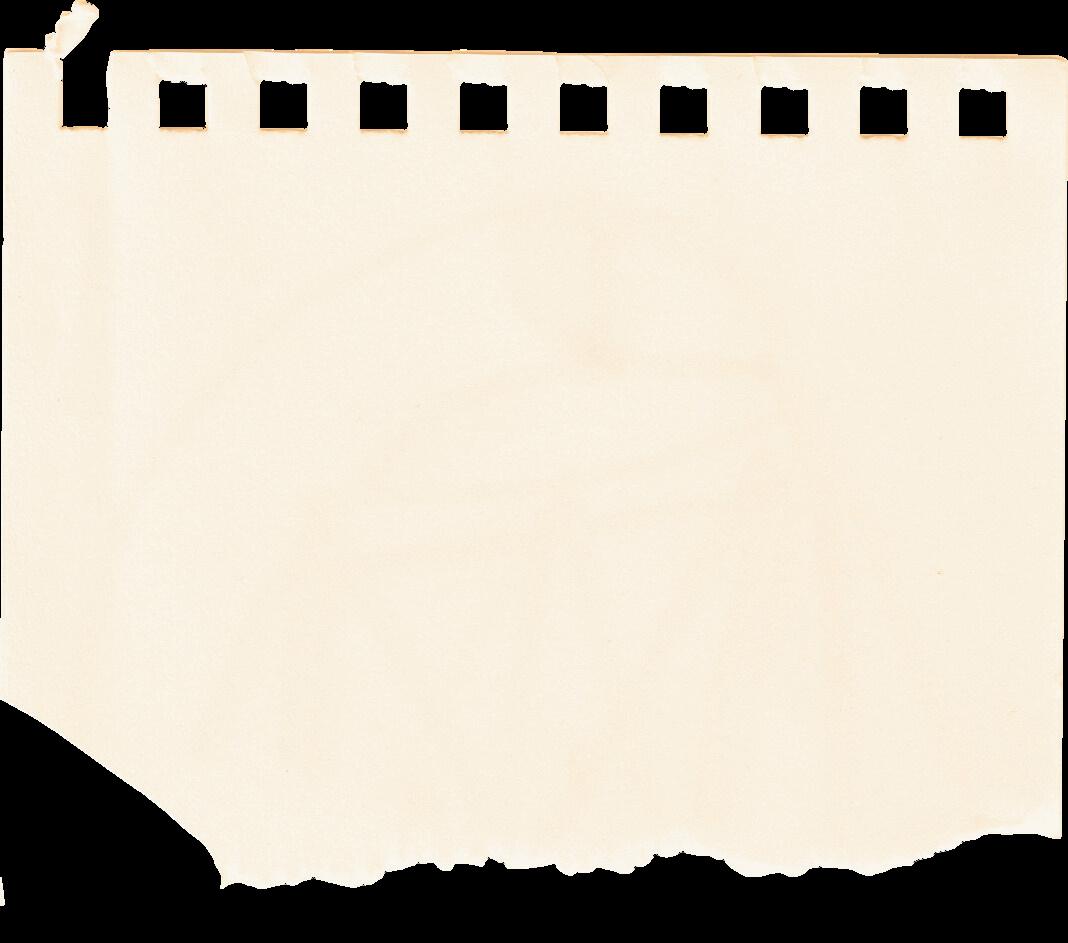
Meets a Vietnamese

I was born and raised in Florida, and growing up h passive-aggressive drivers, and many, many ugly sta understand the dirty looks until you realize that you’re a pink car in a sea of white and silver. Accepting my cultural identity came slowly over the California, the city dubbed as “Little Saigon”. As I peered through the car window to see the city, the streets were decorated with Vietnamese si city in America. My visit to Little Saigon was a jo yearned for growing up. Slowly, I began to heal from the trauma of assimilation. The language I was afraid to speak, with its high and low tones, guarded and hid from my peers became a plethora of and I at the dinner table. The Vietnamese bolero mu Vietnamese-American identity. I was made to neglec my culture, but I now see that it's the most beauti connection.The diaspora Vietnamese community create connected to my Buddhist Vietnamese culture and liv community like I do. My family instilled into me ou of that, I was able to relate to my international friends. Despite having those cultural foundations, Vietnam through the lens of a telescope, placed in American culture and Vietnamese culture fueled my d
When I transferred to university, I had never seen such a large number of Vietnamese international stu language being spoken in passing was, in itself, a culture shock. Especially since I rarely meet young who speak our language. I soon realized that this w constantly search for pieces of familiarity, but it language barriers. The barriers became more apparen

Vietnam

“How do you say the word “airport” in Vietnamese?” we still say phi trường.” and she laughed. Since Vi the Vietnam War and much later into the 90’s, our l to the whims of the English world. Many of the refu and carried their dialectal vocabulary with them, i that has been replaced by the standard northern Vie realization that I might be speaking like a middlemore about how everyday young Vietnamese people spo conscious about my fluency skills. Vietnamese diasp











sânbay 16 | spring 2024



“I like listening to bolero because I grew up with it.” I said. My friend nodded “Your parents listened to it so you would naturally like it too.” The Overseas Vietnamese community loves sentimental, melodic 60’s/70’s Bolero music, especially my grandparents and parent’s generation, but to a young Vietnamese person, that genre of music is from a bygone era compared to V-Pop’s modern popularity. The once-banned Bolero music (yellow music) opposed the Northern Vietnamese government and was banned after the end of the Vietnam War in 1975 so my friend was unfamiliar with singers from a popular musical variety show, Paris By Night, such as Như Quỳnh, who is popular in the diaspora community. Listening to bolero, I viewed my ancestral homeland as stagnant; a country stuck i distant past, but I couldn’t be more wrong. Modern Vietnam has developed rapidly over time with the ri popular V-Pop songs on TikTok such as “See Tình” and beautiful movies like Bố già (Dad, I’m Sorry), Mắ (Dreamy Eyes), and Song Lang. I feel closer to my culture from watching films, it allows me to experie changes in Vietnam even when I’m not physically there. One thing I’ve wanted to experience in-person i Vietnamese street food.


“Is the food in Vietnam better than in America?” I asked. My Huế friend replied, “Of course! It’s mad Vietnam.” In Vietnam, the streets are lined with vendors and a plethora of food options to choose from are unavailable in America. The fresh bowl of beef phở is made with homemade noodles. Like many street foods in Vietnam, everything is local and homemade, while in America we use package vermicelli noodles convenience. My friend explained that’s why Vietnamese cuisine in America tasted odd to him. Does it t synthetic? Have I been eating Americanized Vietnamese food? It seems the more I learn, the more Americ become. My fixation on the cultural differences made me forget about the similarities. I look at my friend and compare. My life could’ve been exactly like theirs, growing up in Saigon with without feeling like an outsider in my own country and communicating my thoughts and feelings eloquent without any language barriers. I would always have a place to call home and a place that accepted me a of them. On the flip side, I wonder how my friend sees me. We hold the same blood and language, but we exposed to Vietnamese culture in two different countries. Some things remain the same, such as our emphasis on family, Tết, and the traditional values Vietnamese people hold about success, marriage, re and courtesy. I realize that every young Vietnamese person is dealing with familial and cultural press placed on us in our college life, careers, and our social life to succeed and repay our parents. Due t parents immigrating to the U.S, I sympathize with my friend’s journey here in America.
In the Vietnamese experience, my friend moved across the world the same way my parents did and navigated another country in a second language. They are consistently working towards their goals and dreams. The experiences they have in a new country is something I can relate to, but the feeling of homesickness is a concept I have yet to experience. We were leaves cut from the same tree, but the win us to different places. I can only hope that my fri that we weren’t so different. I saw Vietnam in phot within me. I can appreciate my own journey as a while emphasizing that I am equally Vietnamese








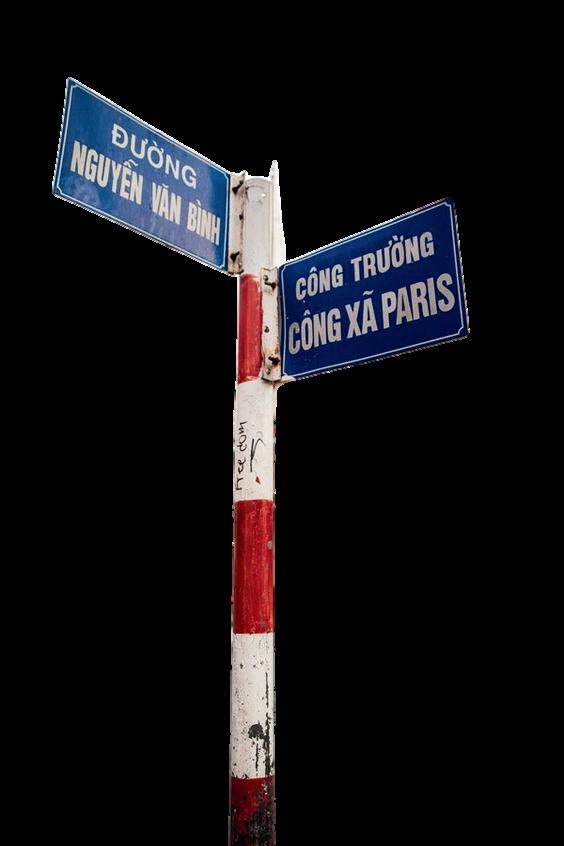


motorbike
spring 2024 | 17


 by
by
18 | spring 2024
Writer/Designer Serena Bhaskar


An ancient dance of stigma, society’s decree, Yet, within discomfort, a quest for self to be free. In Asian cultures, where resilience is revered, Therapy viewed as weakness, to be greatly feared. To bare the soul in a realm of analysis, Where cultural whispers painted reluctance.
Yet, in discomfort’s embrace, a journey’s start, To dismantle the stigma and heal the heart.
Behold the benefits, in the crucible of change, A metamorphosis beyond the norm’s range.
Cultural whispers silenced, I dared to break free, In the cauldron of growth, I discovered me.

My former self, adorned in tarnished hue, Reflections, bruises, lessons not few.
A testament to the journey, a slow ascent, Healing whispers, a sphymony of intent.




 writer and designer Nimrit Doad
writer and designer Nimrit Doad
UGD
spring 2024 | 19
From The Desk of Nimrit Doad




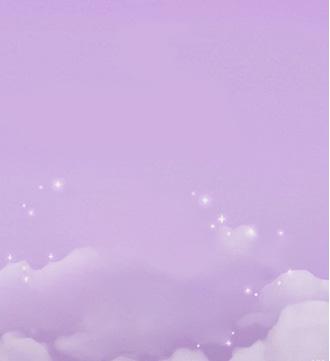
20 | spring 2024






spring 2024 | 21
The Nakba, 1948
Acatastrophe—the destruction of Palestinian culture and society by Israeli forces is a tragedy that Arabs around the world mourn.
500 villages destroyed.
750,000 people displaced.
Thousands of people massacred.
The Nakba serves as a powerful reminder of the atrocities carried out by Zionists and the Israeli state. Even after the United Nations General Assembly passed resolution 194 (II) calling for refugee return, property reinstitution, and adequate compensation, the State of Israel refused to comply. According to the UNRWA, there are more than five million refugees scattered across the Middle East today.

The Palestinian Genocide, now
29,313 people killed, including 12,300 children.
69,333 people injured.
7,000 people missing.
These numbers seem too large to comprehend, but for Palestinians living in the Gaza Strip and Occupied West Bank, they are a grim reality. Gone are the beautiful cities of Gaza, Khan Younis, and Rafah. Gone are the schools, the hospitals, the homes. Gone are the opportunities for entire generations to grow old. Palestinians who were displaced during the Nakba are being displaced again.
Looking at the October 7th attacks, it may seem easy to say that there is conflict on both sides. But when the








22 | spring 2024
by Writer Fariah Ansari

academic year is canceled because there are not enough children to attend school, when children are scraping the remains of their parents from the ground, when mothers are holding their infants in their arms and begging for them to return, disagreements about the nature of the genocide seem to become moot.
Around the world, people are rallying for Palestinians, wearing keffiyehs and taking up watermelon symbols. And yet, countries refuse to take action against Israel. Perhaps it is because of the wealth of resources hidden under Gaza. Perhaps Zionism has become too deep rooted in the West. Perhaps the monetary incentives of supplying Israel with weapons and resources outweigh the lives of men, women, and children. But perhaps there is another reason–Islamophobia.
The conflict serves as a method to use support for Israel to fan Islamophobic rhetoric. This seems to be the most prevalent in India, the home to around two hundred million Muslims. Easily India’s largest minority group, they have been marginalized and are disproportionately affected by violence. The ruling Hindu nationalist Bharatiya Janata Party (BJP) is keen on using fearmongering against Muslims in their elections. In December, the BJP won elections in Chhattisgarh, Rajasthan, and Madhya Pradesh. Indian elections have become biased in removing Muslim representation from Parliament, with 5% being comprised of Muslims in 2019 compared to none in 2023. A 2019 report by the Indian NGO Common Cause reported that half of policemen show anti-Muslim bias and are less likely to intervene when a Muslim is being hurt. Thus, the media

persecution of Palestinians is now being used as a model for the Hindu nationalist agenda.

The Palestinian genocide has incited anti-Muslim violence around the world. Six-year-old Wadea Al-Fayoume was stabbed to death in his home in Illinois. His mother, Hanaan Shanin, was stabbed 32 times. Tahseen Ahmed, Hisham Awartani, and Kinnan Abdalhamid were three college students who were shot at and hospitalized in Connecticut. There have been increased cases of anti-Muslim violence not just in the United States, but around the world. Several countries seem all too eager to lean into the violent actions they attempt to justify.
has been littered with anti-Muslim incidents since the genocide began. Delhi policemen illegally detained, harassed, and coerced a Muslim woman to remove her hijab after entering her home at 3 AM. Indian minister Giriraj Singh called for closures of Islamic seminaries in Bihar. Rashtriya Bajrang Dal, a Hindu supremacist group, organized hate speech events to target Muslim places of worship. Babri Mosque was turned into Ram Mandir, on the false grounds that a temple was destroyed for the mosque to be built. Zionism and the push to establish a Jewish state through the
To understand why there seems to be an increase in Islamophobic ideas in India, it is important to explore the long-standing relationship India has with Israel. While India has voted in favor of a ceasefire, it also seeks to benefit from the genocide. Israel started sending arms to India in 1992, and increased weapon sales following the Kargil War. India remained one of Israel’s biggest buyers of arms and in 2017, Prime Minister Narendra Modi signed arms deals with Israel totaling $2.6 billion. Now, India has reportedly started manufacturing drones for Israel. Over 20 Hermes 900 drones have been sent to attack the alleged Hamas hideouts. First used in 2014, Israel killed 2,000 Palestinians and injured 10,000 others. With so much to gain, it is no wonder that India remains one of Israel’s main suppliers.
The effects of the genocide extend to parallel conflicts as well. Kashmir, a region of Pakistan that has been heavily disputed for decades, hangs in the balance. Now, there is a concern that voices in this Muslim-majority region are being silenced to satisfy Indian authorities. Mirwaiz Umar Farooq and Aga Syed Haadi, leaders of the Kashmiri separatist movement All Parties Hurriyat Conference, had arranged protests in solidarity with







spring 2024 | 23
This story is by students at the University of Central Florida

Palestine that were subsequently prohibited by officials in October. Further, authorities disallowed Friday prayer at the historical Jamia Masjid to perpetuate this culture of silence.
With no end in sight, the Palestinian genocide continues. During the holy month of Ramadan, many Palestinians wonder if they will even be able to break their fasts due to the famine. The continuation of this persecution is only enabling extremist groups in other nations to push forth anti-Muslim rhetoric. It is imperative that the people who are watching this violence from the outside take action. Posting about the genocide on social media keeps the news coming out of Gaza relevant. Engaging with posts regarding Israeli blockades and the perpetuation of famine ensures that people will be unable to turn away from what they see. Boycotting brands that support the genocide or are complicit in it, such as Subway, McDonalds, and Starbucks shows the public what the power of a collective people can do.
Inspired by the resilience and grit of the Palestinians, people around the world are converting to Islam and speaking out against the genocide. The Zionist movement is weakened so long as there are forces that resist it. The herculean display of tenacity by the Palestinians is an inspiration to all who are willing to rise against oppressive and violent forces.

24 | spring 2024
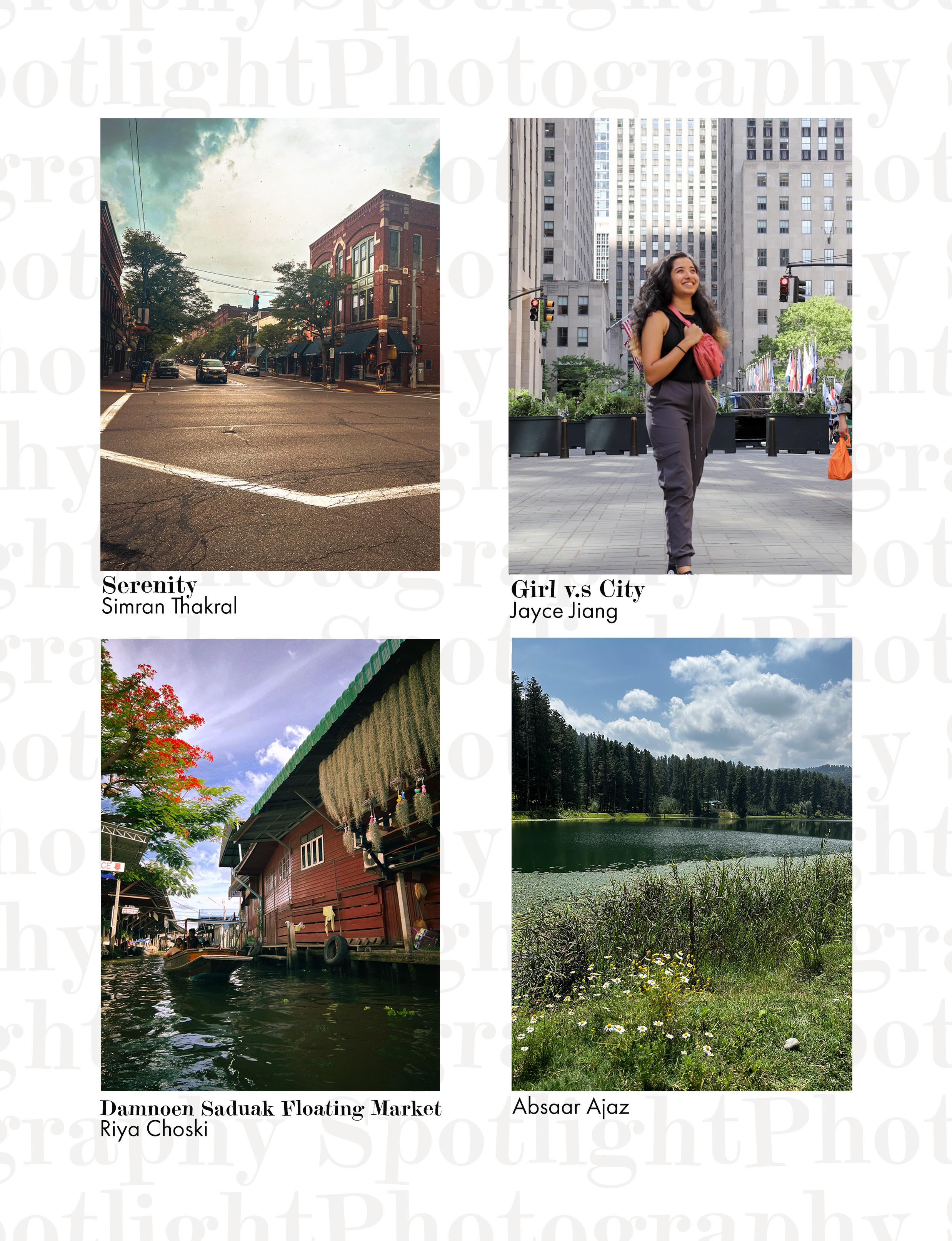

spring 2024 | 25
 by Ramya Subramanian
by Ramya Subramanian
6:30 am: Wake up and get motivated
6:40 am: Skincare routine done and athletic workout set on
7:00 am: Blend greens into a breakfast smoothie
7:15 am: Listen to a self-care podcast on the way to group yoga
7:30 am: Warm up with stretches
Ingrained in our western routine, Movement as the birds sing to start the day serene
An aesthetic life style we crave,
With the accessories that make our materialistic minds cave
Stanley, Sports bra, Lululemon leggings, Hoka shoes
Isn’t that all we need?
Yoga is purely to relieve what a frail life may leave
Strength given to our body as our mind breathes
The body stretched to live more freely lays tainted by mislead beliefs
Day in the life they say as we watch through our small screens
Calming aesthetics that please beyond color, culture, or spirituality
Isn’t that all we need?
But controversy brews in these calm waters
As the essence of yoga is left in turbulent waters
Diluted into an aesthetic exercise,
Spirituality hides in the presence of a comfortable western disguise
Overdue respect lingers where the blade cuts our cultural ties
Now how to reach the other side?


 design/ Merita Thomas
design/ Merita Thomas
26 | spring 2024

Pious transcendence is not the dire requisite you believe Yoga exists as any connection you seek
But the asanas you praise in the western world are one and the same Poses stemmed in belief from the Himalayas are celebrated long and wide
To reap yoga’s prize of health, while unstitching our native threads seems ill-timed
Now how to reach the other side?
Remember the essence of yoga:
To wake up and motivate your soul, To be intentional with the movements of your body, To be devoutly connected to your mind
Not a practice open to transform into an “acceptable” version for you
Not a practice that can be erased of its ancestral roots
All that began with a spiritual movement from the east
All that led to tranquility and self-love in the west
And all that will continue to frame a productive life, Is essentially a transcendent practice
A practice that places unity of mind above blind piety
A practice that inspires a blissful life on the other side
Instructor: “That concludes our 30-minute session, thank you for joining me today! Namaste.”
8:00 am: Recharged to take on your 9-5 after a reflective 5-9!

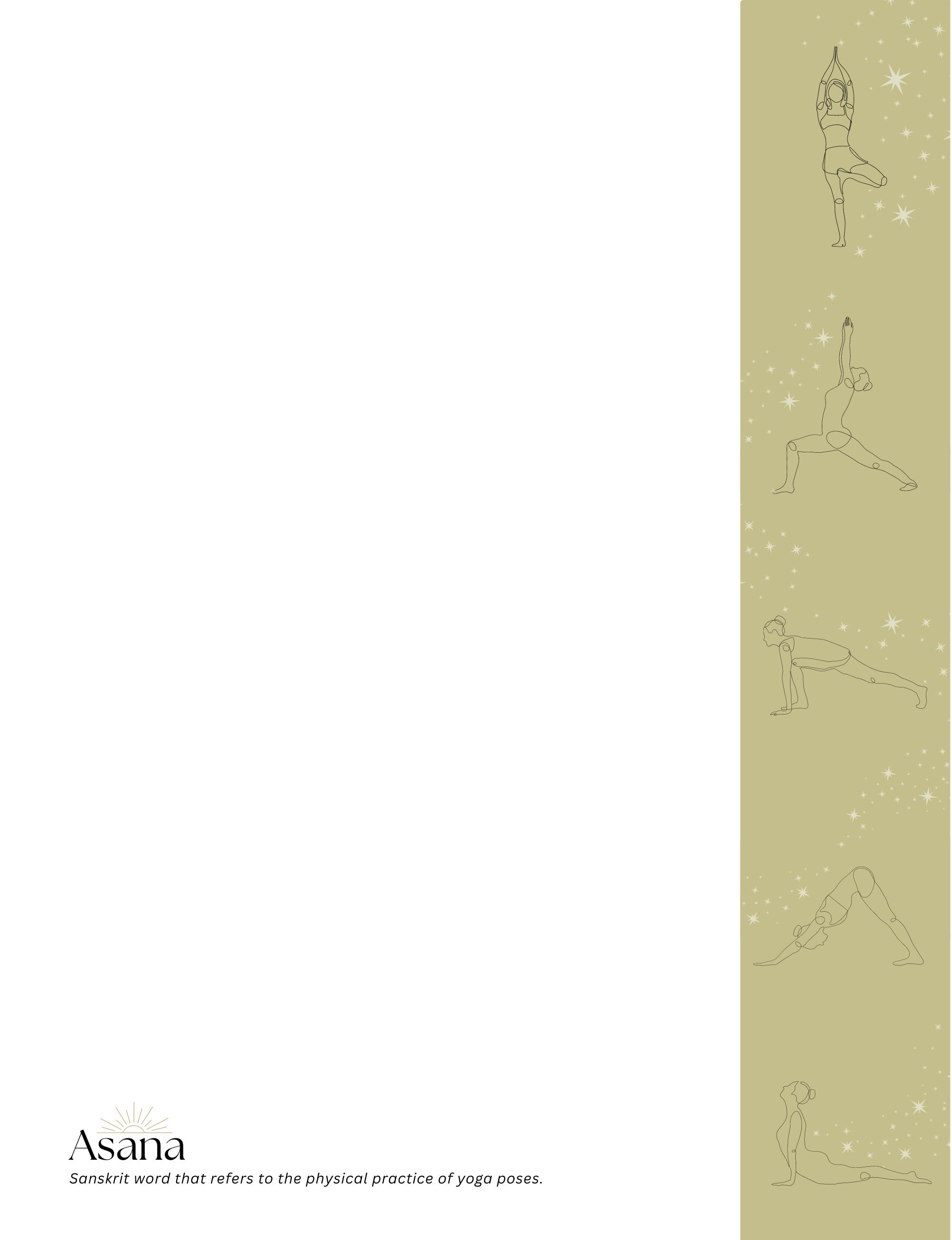
spring 2024 | 27


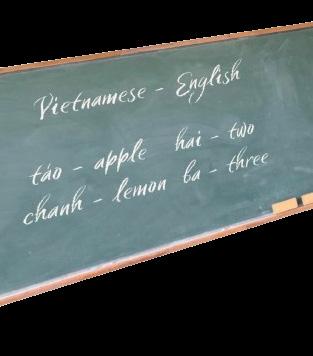
my odyssey

From a distance, my kitchen windows look like mosaics of bright red, yellow, and orange. A closer look reveals jars of spicy pickled peppers glistening in the warm Florida sunlight. An observant eye might even recognize the assortment of glass jars by their mundane and far less spicy past lives holding instant coffee or pasta sauce. Generations of labor, love, and pride are preserved in between each layer of mustard oil and ground peppers. My family has been preparing passed-down recipes of pepper sauce for decades - recipes that have traveled and evolved overseas from India to Trinidad to Canada and now to our home in Florida. While Indo-Carib bean customs can be traced back to certain regions of India, remnants of the languages and traditions remain. For this reason, the traditions unique to my community, especially those passed on by elder
One - một. Two - hai. Russianước Nga. Italy - nước Ý.

I vividly remember the first English words I learned at the tender age of eight. A class full of Vietnamese kids eager to learn English and learn about the whole wide world outside, my mother read aloud word by word and we all echoed her pronunciation.
While pepper sauce preparation pre-dates my grandparents’ generation, it is my aaji (paternal grandmother) that has left behind not only a tradition, but a legacy.
“Mom, why do I even need to study English?”
“You’ll understand when you’re older.”
I remembered going from home to her private English classes next door day after day throughout my childhood and listening in on her vibrant classes. An English professor with a successful private tutor business, my mom built the bridge between thousands of enthusiastic Vietnamese students and the world, me included.
It was her burning passion and spirit in her eyes whenever she walked in class that sparked my interests. Why does my mom love this language so much? What opportunities open up when you learn English?
With the curiosity to find out, I invested the hard work of spending 10-12 hours every day studying English violently. I remember nights of hard work practicing English in front of a mirror with myself. I would read out loud English questions from a textbook and answer questions as if I was conversing with a real person. This was my way of mastering my speaking skills in a homogenous country where hardly any conversations occurred in this language.
Although aaji may have left different impressions on my family members during her time with us, one part of our collective memory of her remains constant - her pepper sauce.
Cloaked in her orhni (white cloth worn around the neck or covering the head), dressed in her jhoola (blouse) and ghangari (long skirt), and decked out in her daily layers of gold; aaji always seemed to be making pepper sauce. Despite her decline of agility in the kitchen, aaji’s wrinkly, arthritic hands never ceased to muster the strength to blend some peppers. This memory of aaji remains vivid amongst my family. While we have all tried to replicate what seems to be a simple task, her expertise remains unmatched.
With unmatched diligence, I ranked first on the notoriously difficult entrance exam to one of the most prestigious gifted high schools in central Vietnam as an English major. From there, I conquered various English competitions, regional and national, while building a solid foundation in preparation for a college journey halfway across the world in the dreamland of many, the United States of America.
Written By Vaidehi Persad
It was no surprise that life in the States welcomed me with open arms. Well-equipped with knowledge on people and culture through my parents’ frequent trips back and forth to the States, I blended in seam lessly with the local com munity. Tampa soon became my second home with friends and connections springing up ev erywhere. Over a decade of hard work sparked fluent conversations, exciting trips to the movies, picnics, and everywhere you could possibly think of. Life seemed more than perfect on the surface.
Aaji was a true matriarch of her time, in many ways, but particularly through her command over the pepper sauce process. This legacy has garnered her deep respect in my family. Making pepper sauce has been a specialized task, unlike other skills used in daily cooking. Pepper-making challenges typical gender roles, emphasizing that food-related preparation, far from being merely an expectation, can be a source of great pride and respect.
 Designed By Merita
Designed By Merita
Hidden beneath the surface, however, was an immense and indescribable yearning for an unattainable sense of belonging within my second home.
Every summer is marked by the intense process of pepper sauce and pickle making.

The more I tried to perfect the language, the more it seemed to push me away. “Your English is perfect!” was the rite of passage for every first conversation

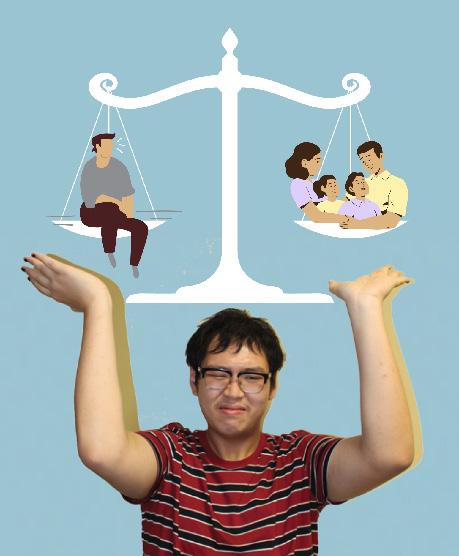


 by Quyen Tran design/ Dan Pham
by Quyen Tran design/ Dan Pham
28 | spring 2024


with people when they find out where I was originally from. While my understanding of the language has improved dramatically, there would be jokes, catchphrases, or cultural references that unfailingly catch me off guard. What could pass off as honest mistakes for individuals with a rather foreign accent could easily be perceived as intentional phrases on my part. It takes time to patch these wounds when I make these negative first impressions. Some would not even spare the mercy to let me explain what I truly meant and either make fun of me or just outright leave. I might sound like one of you, but I’m not one of you.
While a Florida summer can lead to heat exhaustion outdoors, stepping into a Caribbean household kitchen amidst the pepper-making process will likely lead to more severe symptoms of coughing, sneezing, and burning eyes.
It took time and patience for me to slowly come to terms with my imperfections. There were days where I caught myself silencing my own thoughts for fear of judgment. “Oh sorry! I’m not from here so I didn’t really catch what you say,” came out so easily in the past, but not anymore. Looking back, I realized a “perfect” accent was my way of protecting myself from the fear of never fitting in. If I could speak the language just like everyone else, I should belong. I must belong. This has to be my home.


put a name to the object I see in front of me.
I bursted out crying to my mom one night, telling her how unfair it felt for English to betray me when I had worked so hard for the past 10 years to perfect it. My mom offered her usual wisdom: “Quyen, what do you think languages are born for? Languages mean communication of ideas. If you can communicate your thoughts and feelings, doesn’t that already serve the purpose? You don’t have to be perfect to truly connect with people.”
Being in the presence of ground Ghost peppers, Carolina Reapers, and Moruga Scorpion peppers will surely take even the most avid consumer of pepper sauce as its victim, but those with the pepper-making gift remain unphased. The process begins with home-grown ingredients. Most of these peppers can be harvested as short as four months after planting. From green to yellow to red, peppers at all different stages of ripening can be used to extract specific flavors and heat capacities. While the younger and newer plants are said to yield mild-heat peppers, the ripened peppers of more mature plants are thought to
Learning to love English again also meant learning to love my hard work and imperfections and embracing my identity as a Vietnamese person. When people talk to me, they’re not solely interacting with my English capabilities, but my vibrant multicultural thoughts and perspectives. English might not have chosen me at first, but I chose to purposely come and add my own colors and diverse lenses of the world to it.
When the pain of judgmental looks from people who couldn’t look past my innocent mistakes faded, I looked around and remembered a feeling of warmth and gratitude hugging me from behind from those who choose to stay.
My family has been growing our own pepper plants for years. Back in the day, pepper sauce was usually prepared with fresh ingredients like lime, Scotch Bonnet, Congo peppers, and Seven-Pot peppers. Today my family likes to test the tradition with newer and even hotter peppers that top the Scoville heat scale. From my parents’ Florida backyard to my sister’s Toronto apartment balcony, you’ll find some of the world’s hottest peppers growing.
If things were to get tough one day, I know I have many friends who would be just a call away. They would show up for me, and not just because I perfectly understand their English. They would choose to patiently wait for me to gather my thoughts and translate it from Vietnamese to English in my head before sharing it to them. They would smile and say, “It’s okay!” if I can’t pronounce a word or couldn’t
Just like that, I was reminded of why the journey started in the first place, and how I was so foolish to set perfection as the standard instead of appreciating the magic with which this language has blessed my life. A renewed sense of appreciation sprouted in the soil of my heart.
Now, whenever negative thoughts cross my mind, I remind myself of the immense sense of gratitude for the communities, friendships, and memories I have built thanks to the enchanting power of English. If my beautiful mother, friends, and community can see the per fect in my imperfections, I can see it too.
Maybe English does choose me. I just need to choose it back.

A bit of green papaya and a larger ratio of lime to pepper
For a more nuanced flavor that transcends any other spicy pickle or pepper sauce, one might attempt to prepare the essential of any Trinidadian household, “Kuchela.” This spicy relish is quite labor intensive and involves ingredients such as Scotch Bonnet peppers, mustard oil, and amchar masala. While the spiciness is essential, the peppers take a backseat in this pickle. Mangoes make up the major ity of this relish and for the most impressive results, homegrown and hand-grated green mangoes are a must-have.
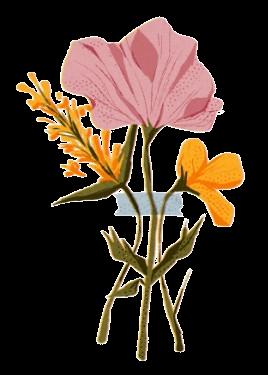

The entire skin and flesh of the mango must be grated down to the seed, and at least ten mangoes are needed for it to be worth your time. This shredded mango is then squeezed multiple times to release any water and left to dry. The oil, masala, and pepper are then prepared to pickle the mangoes. As the pickle ages, the flavors intensify. Growing up, my parents would repeat the process of shredding green mangoes over the summer. To mass dry the shreds in a controlled environment, they would place baking trays of the mango in our old minivan and let them dry in the Florida heat. The smell of sum mer is green mangoes shriveling under the sun.







spring 2024 | 29
A fold of clothing.
Unwoven Loose Threads of Tradition
A nicely done tuck in the front. Heavy embroidery draped onto him— wearing him more than he wore it.
These clothes, this celebration, these people…they all wanted a show of confidence, more confidence than Three had, more than what he could fake.
For Three, confidence belongs to everyone but himself.
His best friends, for example.
Confidence permeated their behavior; in every smooth action they undertook.
A fold.
Um and Dva knew themselves in a way Three didn’t.
Um and Dva were confident, and even if brash might be a better suited word, in Three’s ide alistic view of them…they deserved it.
At every festival, Dva would dance the night away and Um would sing until the sun rose, making both of their families radiate pride. Seeing the smiles on the village elders’ faces, happier than they ever were when looking at Three, made Three jealous.
for his tongue when he spoke a language he could barely understand. A reunion with the town he hasn’t seen since his birth.
It wasn’t Three’s fault, not really. Not many would take on the responsibility of caring for a child that wasn’t their own, a child plagued by misfortune.
Really, it was a miracle that Three didn’t end up on the side of the road, that he had a roof over his head, and that Three had a grandmother and a grandfather to cherish and hold dear.
Even the clothes currently being wrapped around him in preparation of his coming-of-age ceremony felt like they were for show. To have him prance around the town and garner pitying sighs and sympathetic glances to internalize.
So, he stood in place and watched Um and Dva reach for things beyond his line of sight, and he waited for them to take pity and come running back with their stories and treats.
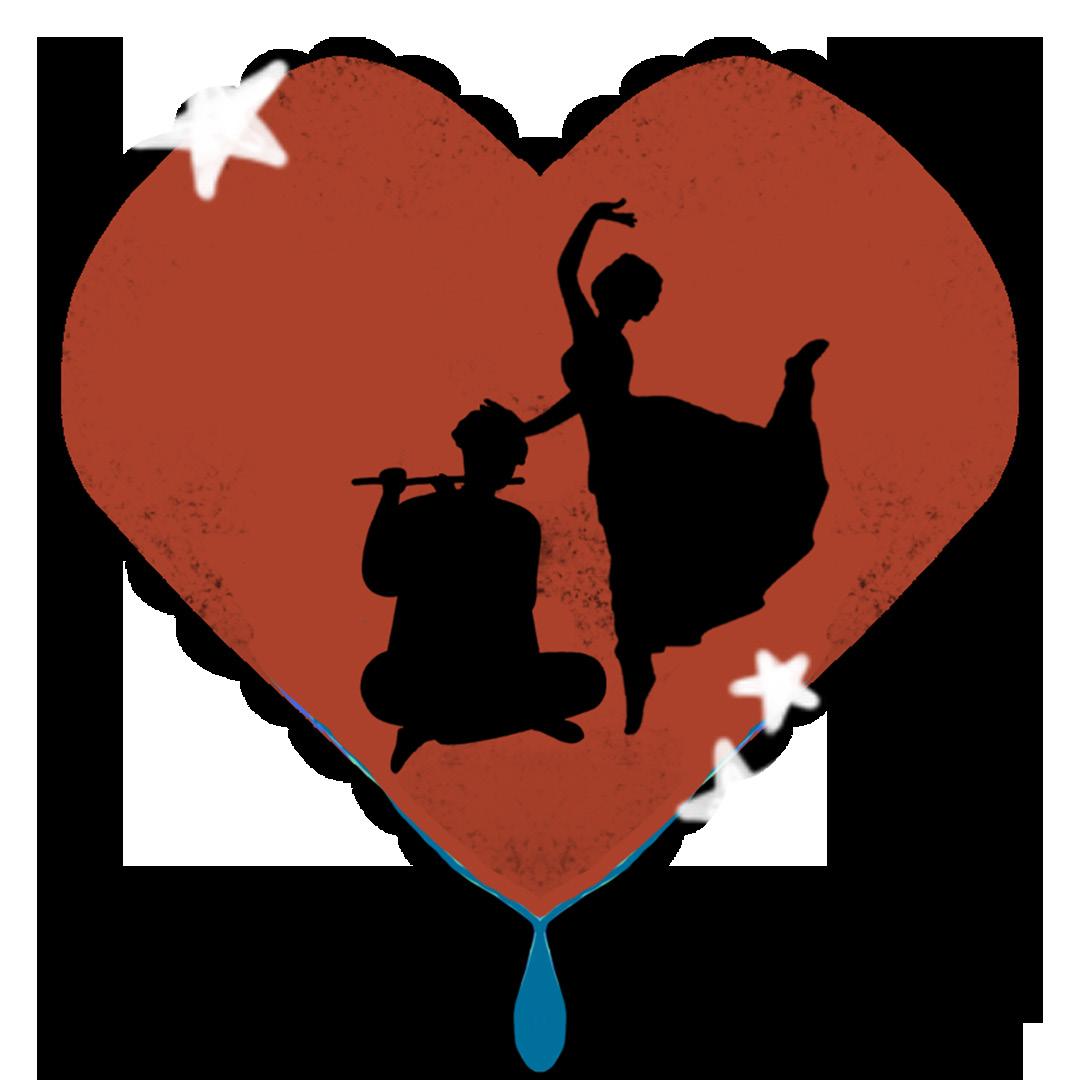
Neither of them would balk at being pranced around town for their comingof-age ceremony.
Another fold
Three did. He felt his skin crawl the tighter the clothing got.
He felt like an imposter.
Confidence didn’t describe the awkwardness that sat heavily on his tongue. The angular motions that felt too large
But he didn’t have much else.
A tuck, this time.
He didn’t have Dva’s brilliance, Um’s tenacity, he didn’t have any goals or dreams or hopes.
He didn’t have expectations of anyone, and no one ever had any expectations for him.
Even their complaints, the things their parents wanted from Um and Dva, the difference in the pressure they placed on them compared to him, their disappointment preluding any action he can take up, it only caused jealousy to rage higher in his chest.
A pin to keep everything in place. It pricked his skin.
It made Three feel like the loneliest child in the world. He knew it wasn’t a system that could stay in place forever. But he was baggage, and as long as he wasn’t left behind, he wouldn’t be forgotten. And, he could settle for that.
Three couldn’t cook the way Um could, with techniques passed down for generations. He couldn’t build useful tools the way Dva could, with methods perfected over the lifetimes of many. All he could do was stand silently, waiting for the tiniest scrap of attention to be thrown his way. And then he would fumble through losing it.
Whispers followed him around, too. Whispers that he couldn’t get rid of; whispers that made him feel seen, even if it felt more like a public execution rather than honeyed approval.
Poor boy lost his family too young.
No wonder he doesn’t know how to behave.

 by Writer Sanjana Nallapati design/ Designer Amreen Naveen
by Writer Sanjana Nallapati design/ Designer Amreen Naveen
30 | spring 2024
Mhm, when he walks by, he doesn’t smell of anything but bland shadows.
Gosh, it’s as if he’s more of a ghost than his dead family.
Three often wonders if he would feel less lonely if he had someone to pass down their knowledge. If he had someone standing with him in the kitchen, giggling over a family recipe done just right. If he had someone to imbue their wisdom into the sprightly youth, maybe Three would have a better sense of self. Maybe Three would have had a foundation to solidify his identity.
But he didn’t.
“There!” The neighborhood seamstress beamed at him— at her work— and turned him to face the mirror..
“Feeling ready for tomorrow?” She asked him, eyes meeting him in the reflection.
Three nodded. He didn’t mean it.
He studied himself in the mirror.
He didn’t think he looked like himself. He looked like a made-up doll, painted to suit someone else’s image of him. An image he so desperately wished he could grasp and happily paint onto himself. He wondered how other people viewed him.
Three didn’t think he could face tomorrow. He didn’t want to be greeted by pitying aunties and uncles. He didn’t want to hear murmurs of how he lost his parents too early, and how he grew up okay.
He didn’t think he grew up okay, he grew up alone. And he had no idea who was looking back at him.
The seamstress began loosening the pins.
Unfold.
He could breathe better.
Unfold
His skin stopped itching.
The pins came out.
Three stepped out of the cloth, only in the regular clothes he wore under. He felt happier. More comfortable. He felt like crying.
Three wanted to see his parents in his subconscious actions. But their culture, the one shared tether, felt so alien to him. His foundation, his beginning, it all crumbled the more he reached for it.
And he couldn’t let that happen.
Later that night, Three stared up at the dank ceiling of his room and thought back to the favor he stammered his way through earlier that day.
“C-could you—”
Three buried his face in his pillow and muffled a scream. He didn’t want to remember that. But it meant that he now had two teachers to teach him how to cook and carve. They are not skills that he imagined his parents would have taught him. They are not skills that come from his own culture. But, he had to start somewhere. And, learning things from his friends was never a bad idea.
Tomorrow, though…maybe Three will ask his grandparents what they did in their childhood.

A part of him couldn’t help but to silently await the disappointment that was certain to come tomorrow. The brushing off of his questions, the redirecting to more “important” pursuits of knowledge, a flimsy half-answer.
Three had received more of those than anything else before in his life, after all. It was to be expected. But a tiny spark of childishness stayed warming his chest. Told him to just wait and see and have his expectations be proven wrong. Such a small ratio of hope compared to his distrust, yet it clutched onto his heart desperately, steadfastly. Three never could win against that flicker of longing.
So, Three let his eyes slip shut, tired after a long day. His aspirations could await another day. He reminded himself that for people like him, life collected slowly. And that his timeline was just that– his own. He didn’t need to rush; he



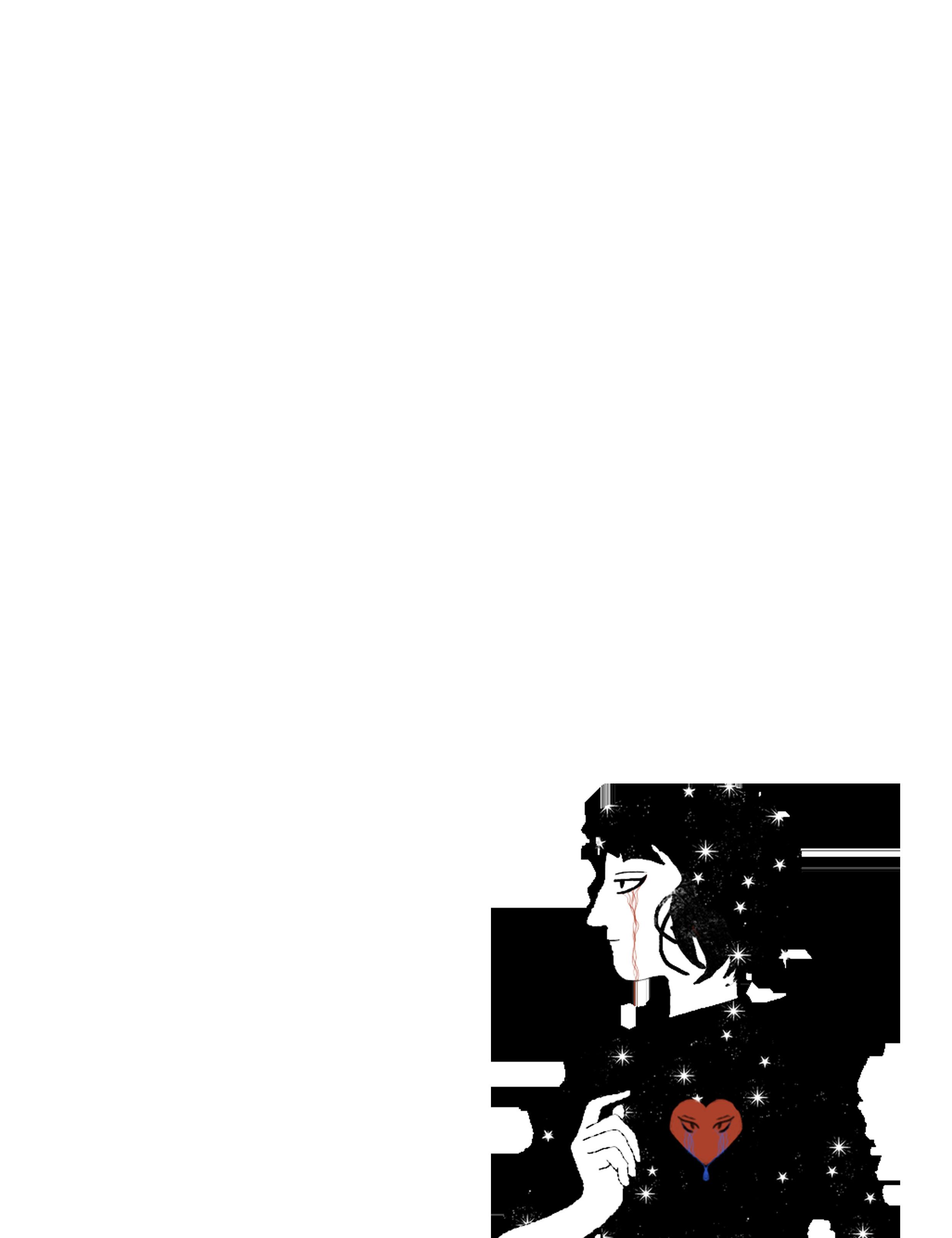

spring 2024 | 31
BECOME An ASian TODAY! GRANDMA
Being an Asian Grandma is a state of mind, not a state of being. One might think to be a grandma you have to be graying and wrinkling. You have to possess the wisdom only aging provides. And at the bare minimum to be a grandma, you need to have grandchildren. And to that I say “nay.” You need not these things to be a grandma! What you need is just a few tweaks in your lifestyle and you too, you, at the ripe age of 21, can become a grandma.
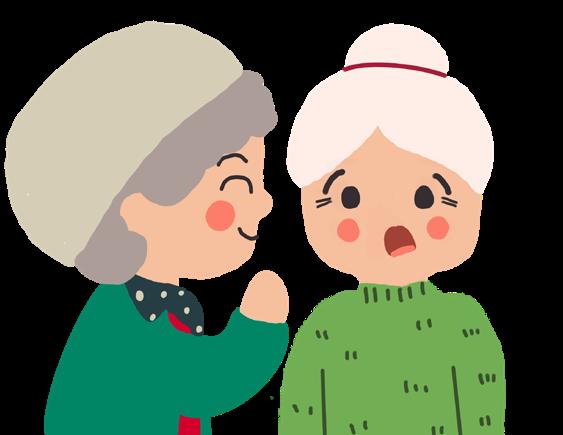
Chit-chat
If Asian Grandma is not watching TV, cooking, gardening, or asking you if you ate yet, she’s chit-chatting on the phone. Sometimes she is on the phone and doing these activities simultaneously. Grandma loves the hot gossip. She loves bragging about her grandkids. And if you’re lucky enough to be there when she hangs up, maybe she’ll share a little of that gossip with you too.
CAi luong (Vietnamese folk opera)
Cải lương is always on the TV of a Vietnamese Grandma’s house. It is a combination of southern Vietnamese folk songs, classical music, and modern spoken drama. It is often set in ancient times with the characters wearing colorful and intricate outfits. The men’s faces are decorated with interesting facial hair and the women with bright makeup. Cải lương boasts a special kind of singing called vọng cổ, with đàn tranh zither and đàn ghi-ta (Vietnamized guitar) swelling in the background. The actors use a combination of spoken dialogue and vọng cổ. You best believe when it was time for Cải lương, bà nội (grandma) will yell from across the house, “Đổi kênh cho bà nội đi con!” Change the channel for grandma! And when she does, you’d better stop what you’re doing and run for the remote.

Knitting

Want a handmade sweater made in ethical and lush working conditions? Tell Asian Grandma, and she’ll have a hand-knit cardigan ready for you the next time you come over. Need a hemline taken up, give it to Asian Grandma, she can do that with her eyes closed. Asian Grandma can knit, sew, and crochet. She can look at a store-bought knit garment and recreate it, no pattern required.
“Did you eat yet?”
This is Asian Grandma’s number one concern. And even if you tell her that yes, you did eat, she will not stop asking until you repeat yourself at least four times. If you are feeling even a twinge of hunger, she will materialize something for you to eat-leftover rice and meat, soup, a bowl of nuts, and fresh cut fruit. Her fruit cutting skills are immaculate by the way.




 by Reagan Huynh
design/Daniela Kate Abaquita
by Reagan Huynh
design/Daniela Kate Abaquita
32 | spring 2024

Exercise
Asian Grandma will be going for a walk today. And tomorrow. And the day after. She has to survey the cul-de-sac. Ensure nothing is out of the ordinary. And of course, to get some exercise. Exercise is very important to Asian Grandma. Exercise consists of swinging her arms, kicking her legs while sitting on the couch watching tv, and stretching before bed.
You will fail at something in your lifetime, which is uncontrollable. What you can control is how you approach your failure. Understand that setbacks are a natural part of any journey. Instead of dwelling on them, use them as stepping stones to grow and improve. I used to overanalyze both my academic and personal past failures until I fell into this cycle of negativity. I realized that wallowing will not change the outcome. The failure already happened and spiraling over it will not change or reverse it. Instead I would tell myself to look at the failure, assess it from a higher perspective, find the faults, make a plan to improve,
DAu giO xanh-herbal oil
Every Asian Grandma has this in their purse. In Vietnamese they call it, dầu gió xanh, which translates to “herbal medicinal oil.” Put your nose up to a bottle of this green liquid and the pungent spicy mint smell will make your eyes water and wake your senses right up. This oil is used for everything! Sore throat? Dầu gió xanh. Stomach ache? Dầu gió xanh. Bump your head? Dầu gió xanh. Break your leg? Dầu gió xanh.

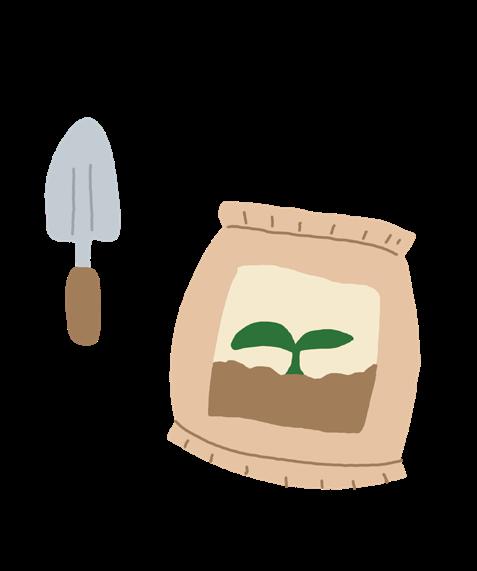


Gardening
Asian Grandma has a green thumb. When you come over, her garden is often the first thing she shows you. If it’s too sunny, she’ll pray for rain. And if it’s too rainy, she’ll pray for sun. You see those leafy green veggies, cucumbers, tomatoes, and oranges on her table? Yeah. She grew those.
Function over Fashion
she’s She’s lived too long and through too much to care whether perfectly good polka-dot cardigan. Who cares that it clashes with her striped shirt, and that the color doesn’t go well with the other pullover sweater she’s she’ll wear a bucket hat with her church dress, socks with sandals. She’s not ashamed.
As a child I used to have a “Go Me” song. The only lyric in

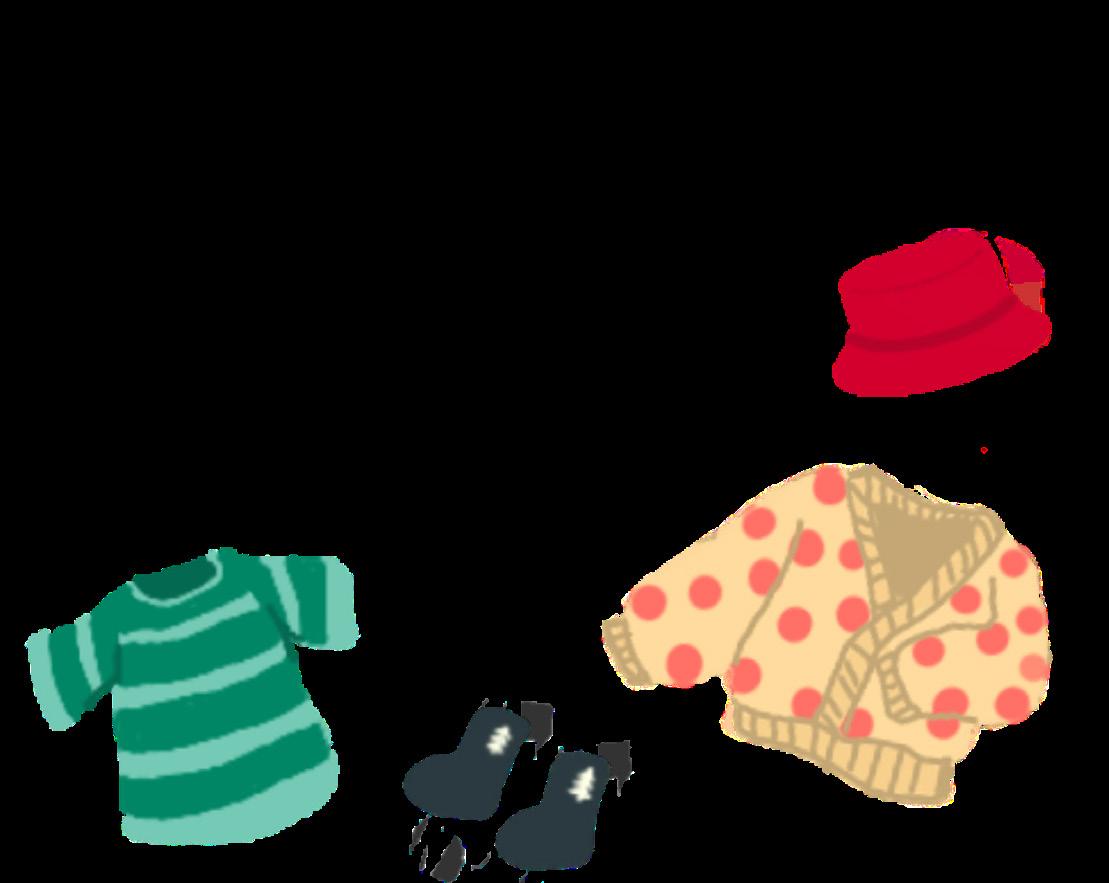

spring 2024 | 33
fear
of home
As the plane takes off so does my imagination, thoughts blanketed with expectations.
A tight, inviting comfortable hug; family scattered across a familiar rug.
A house full of joy and laughter, Catching up, thinking of things to do soon after.
A dream that never comes true, Maybe a bit too taboo.
 by
Written and Designed By Merita Thomas
by
Written and Designed By Merita Thomas
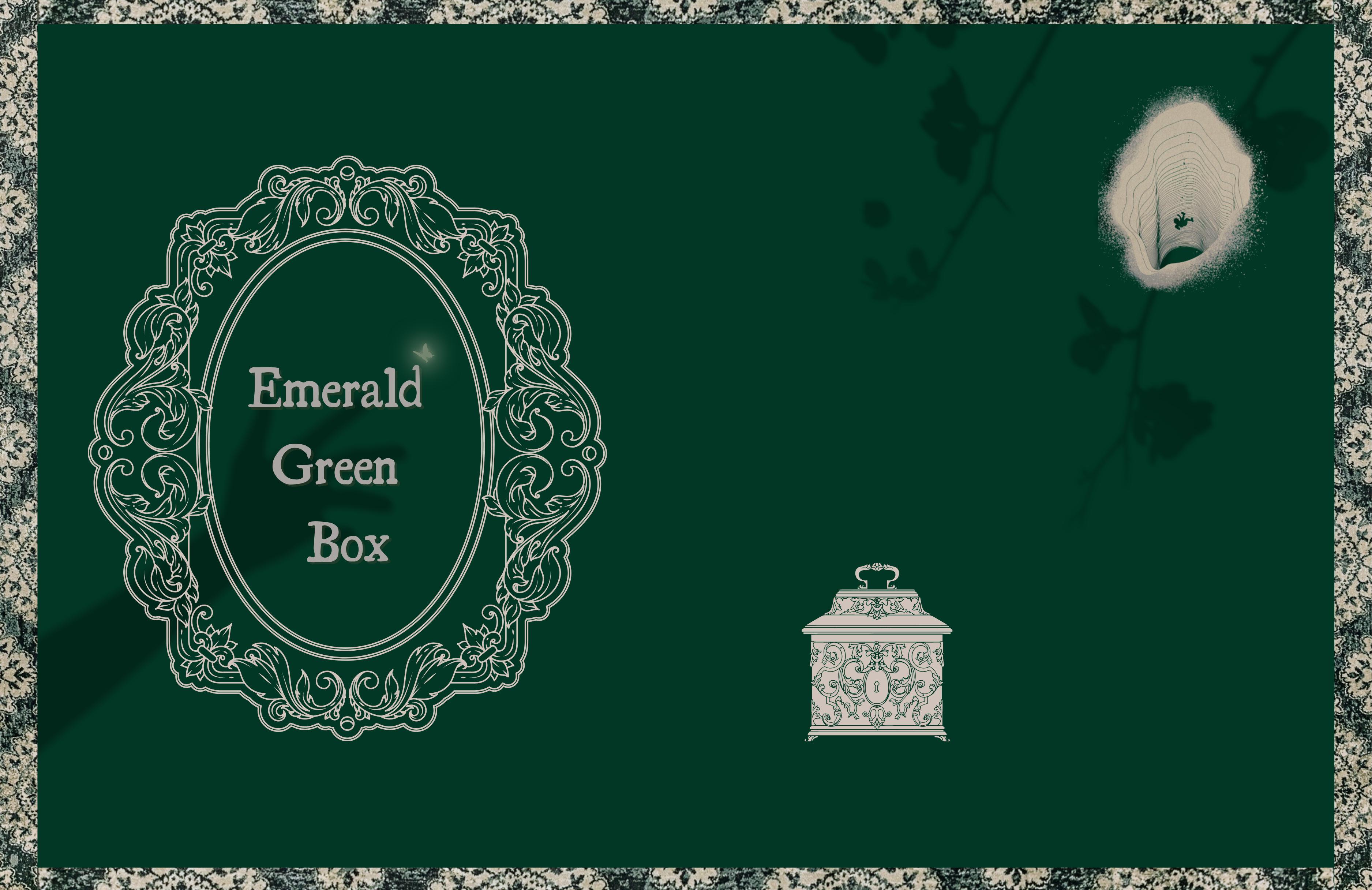
 Mridula Singh
Mridula Singh
34 | spring 2024
design/Daniela Kate Abaquita
After all the clatter and chatter, The question is always ‘have you gotten fatter?’

The laughter suddenly turns in my direction, Taunts wrapped in affection.
The hug turns into a scan, It is always someone wondering how I’ve become so tan.
What can I do to change it?
How can I get through to them?
When will my expectations be met?
Why am I forced to meet their expectations?
One day, landing will bring joy.
One day, landing won’t be a ploy.



spring 2024 | 33

Introduced by Mattel in 1959, the original Barbie portrayed a stereotypical American woman with Caucasian features, blond hair, light skin, and a slim body. Over the years, Barbie evolved into a feminist icon, showing young girls that they could be anything they put their mind to – an astronaut, scientist, businesswoman, and more. However, Barbie faced criticism for promoting unrealistic body standards and lacking diversity. Despite being one of the largest and most profitable toy companies, Mattel struggled to represent women from different cultures and communities. The first South Asian Barbie, released in 1995, was a doll with brown skin and thick black hair wearing a bright pink sari with a yellow patterned border and jhumkas. Despite efforts to promote diversity, its sales and popularity were low. Moreover, Mattel did
not define the specific region of South Asia she was from, instead branding her as “Indian Barbie.” This oversimplification reduced the portrayal of brown girls to merely wearing saris, disregarding the various cultures and countries within the South Asian diaspora.
Unlike Mattel’s Indian Barbie, South Asian girls display a variety of hair types, including straight, curly, and wavy, and have a wide range of skin tones, from light to dark. They also wear various traditional attires, such as lehengas, kurthis, salwar kameez, chudidars, and burqas. However, Mattel’s attempt to encapsulate this diversity within a single Barbie doll reinforced harmful stereotypes, suggesting a narrow standard for social acceptance. This left many girls feeling that their unique and often underrepresented South Asian cultures were not as socially accepted as others. I mean when there are Barbie dolls with Caucasian features depicting various professions, why is it that the South Asian Barbie is only confined to a sari?
as a reminder that individuals should never feel compelled to confine themselves to particular traits or roles and that we, too, could be powerful leaders.
Mattel also attempted to be more inclusive through animated Barbie movies and shows. However, after decades of poor efforts, the 2023 live-action Barbie movie directed by Greta Gerwig, starring Margot Robbie and Ryan Gosling, left an indelible mark on Barbie and feminism. Set in Barbie Land, a fantasy paradise, Barbies hold a variety of careers, from astronauts to doctors to the President, while Kens’ roles are confined to “just beach.” The movie highlights a stark reality. Instead of being valued for their individuality, Kens are perceived in relation to Barbies, mirroring a real-world dynamic where women are frequently objectified and deemed inferior. This tendency reduces women to objects of relationships rather than individuals deserving of respect for their true selves, which leaves many women with insecurities about their self-worth, bodies, intelligence, talent and more.
Now more than 20 years later, the 2022 release of the Indian Businesswoman Barbie was revolutionary for the brown community. Deepica Mutyala, CEO of Live Tinted - a make-up company dedicated to supporting multicultural communities, especially South Asians - teamed up with Barbie Style (Mattel) to design a South Asian Barbie doll. This collaboration aimed to authentically represent the different South Asians growing up in America. The Indian Businesswoman Barbie, with her power suit, jhumkas, and bangles, communicated a powerful message to young Brown girls. She highlighted that there is not a specific skin color, dress, or even ethnicity that one should be confined to. The Indian Businesswoman Barbie served
The live-action Barbie film serves as a powerful commentary on these societal issues, challenging stereotypes and advocating for genuine equality and respect for all. This is exemplified through the character Gloria, a middle-aged woman struggling to bond with her daughter.
In her introduction scene, Gloria is seen drawing images of depressed Barbie, highlighting her struggle in both her work and personal life. As a corporate office worker, she manages her work well. However, her personal life suffers as she struggles to nurture her relationship with Sasha, her daughter. Seeing Gloria’s journey of overcoming depression and bonding with her daughter raised a spark of connection in South Asians, especially those living in America. We often see mothers and daughtersstruggling to maintain a healthy relation by

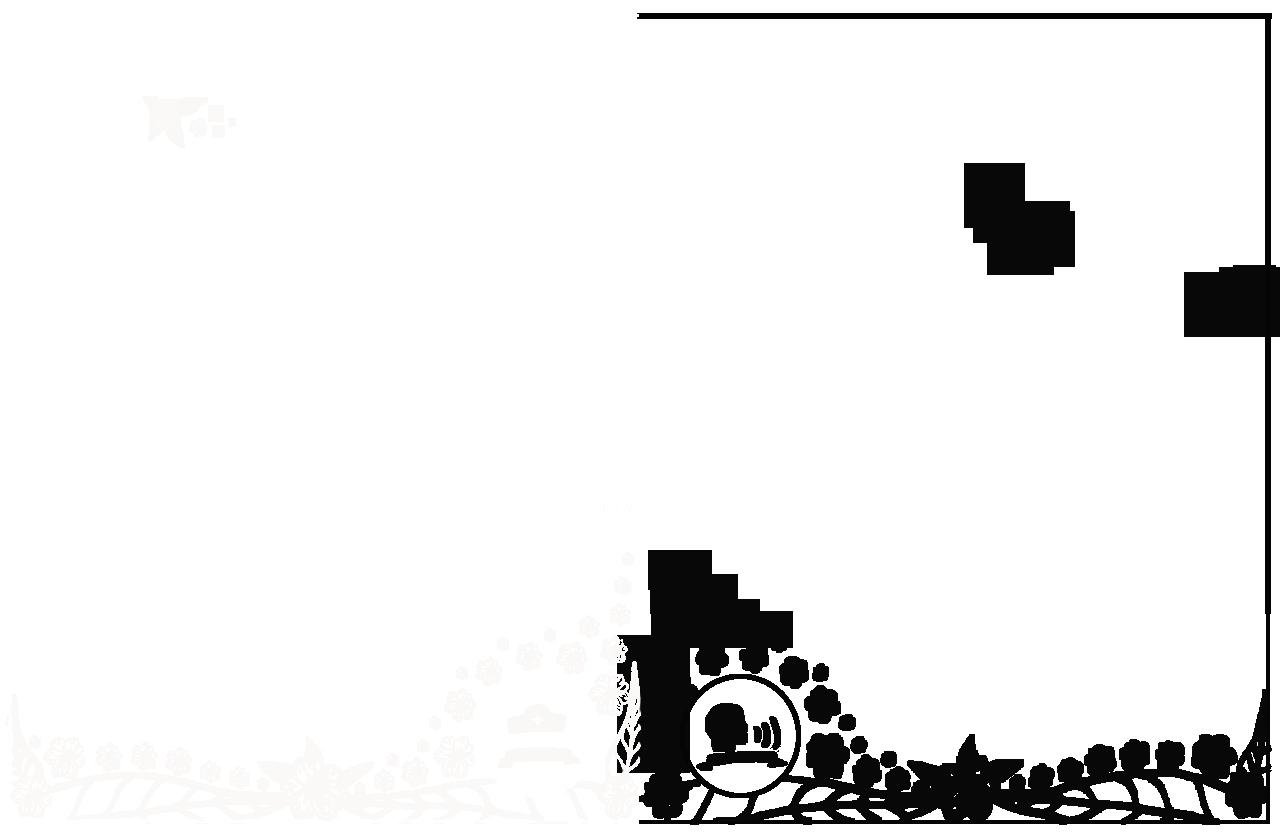



 writer/Yasaswi
writer/Yasaswi
36 | spring 2024
N design/ Shifa Shaikh
ship due to the different environments they were raised in. Our mothers grew up in a traditional culture in our homelands, adhering to their specific South Asian culture, which impacted their career choices, education, relationships, and lifestyles. As we, their children, grow up in a more Western environment, we tend to have more progressive perspectives on lifestyle, relationship, and career choices. This difference often leads to more liberal viewpoints within our generation. While our parents try to understand, they struggle to grasp the change, often resulting in tensions or conflict in households. Watching Gloria and Sasha’s character development in the movie reminds many of us of our relationship with our own mothers.
Gloria’s epic monologue midway through the movie also highlighted the double standards that women are subjected to in various aspects of society. Gloria expressed the unfair expectations placed upon women. She emphasizes how women “have to always be extraordinary, but somehow we’re always doing it wrong.” Her statement emphasizes how women are often expected to live up to certain unrealistic standards or stereotypes and anything outside that realm is considered “wrong.” However, those standards and stereotypes only further stimulate women to be surrounded by a toxic society, workplaces, and even households. This is one of the main issues affecting women in South Asian countries. However, through community organization and legal reforms, feminism is gaining traction in South Asian society. In fact, millennials and Generation Z are leading the way in facilitating open conversations to educate their communities to break down these inequalities which stimulate toxic environments.
While there is ample support for the struggles of younger women in various movements, the difficulties faced by middle-aged women, such as our mothers, aunts, and those of their generation,often differ from our own experiences and are overlooked and forgotten. One significant challenge they encounter is the pressure from society and family to maintain a harmonious life while managing household responsibilities. This is
particularly prevalent among South Asian women whose cultures impose stringent expectations on managing balanced households.
When Gloria says how “You have to answer for men’s bad behavior, which is insane, but if you point that out, you’re accused of complaining,” I believe it sparked a sense of recognition in us. Throughout our childhood, we often witnessed instances where the women in our families were mistreated, or disrespected, yet very few people stood up for them. As young children, we may not have fully realized the toxic standards and views women were subjected to, but as we grew older, we came to understand and recognize these injustices more clearly.

For instance, a very unfortunate yet common injustice women face in South Asian households is domestic violence. According to the recent UN statistics in 2023, an average of 35% - 50% of women living in South Asian countries experience physical or sexual abuse, compared to an average of 27% of the women globally. In some South Asian households, men exhibit aggressive and abusive behavior towards their wife or daughters. Women are often compelled to remain silent and endure the mistreatment for the sake of the family honor, fear of breaking apart a family, or even due financial
dependence on their husbands. If they do speak up, they are often accused of exaggeration or blamed for triggering the abuse behavior, rather than holding the men accountable for their inexcusable behavior.
Gloria’s words remind us of these instances, showing exactly how women were suffocated by the double standards: expected to toler ate and answer to their husband’s or father’s bad behavior without talking back to them, to remain polite and restraint, and to repress their true emotions and feelings.

The Barbie movie made significant strides in facilitating a conversation on feminism amongst many of the wide-ranged audience it reached. Seeing Barbie and Ken reminded us of the different ways men and women are treated. Moreover, watching Barbie interact with Gloria and Sasha reminded us of instances we faced growing up where we or other women in our families had to interact and cope with unrealistic demeaning expectations. Just as Barbie and her perfect world in Barbie Land are unattainable ideals compared to the realities of Gloria and Sasha’s lives, societal expectations can similarly be unrealistic and contribute to inequalities and toxicity that hinder us from living happy lives
While Barbie made us fall in love with her again, she made us want to be our true selves. To live by our own standards, rather than society’s standards.






spring 2024 | 37

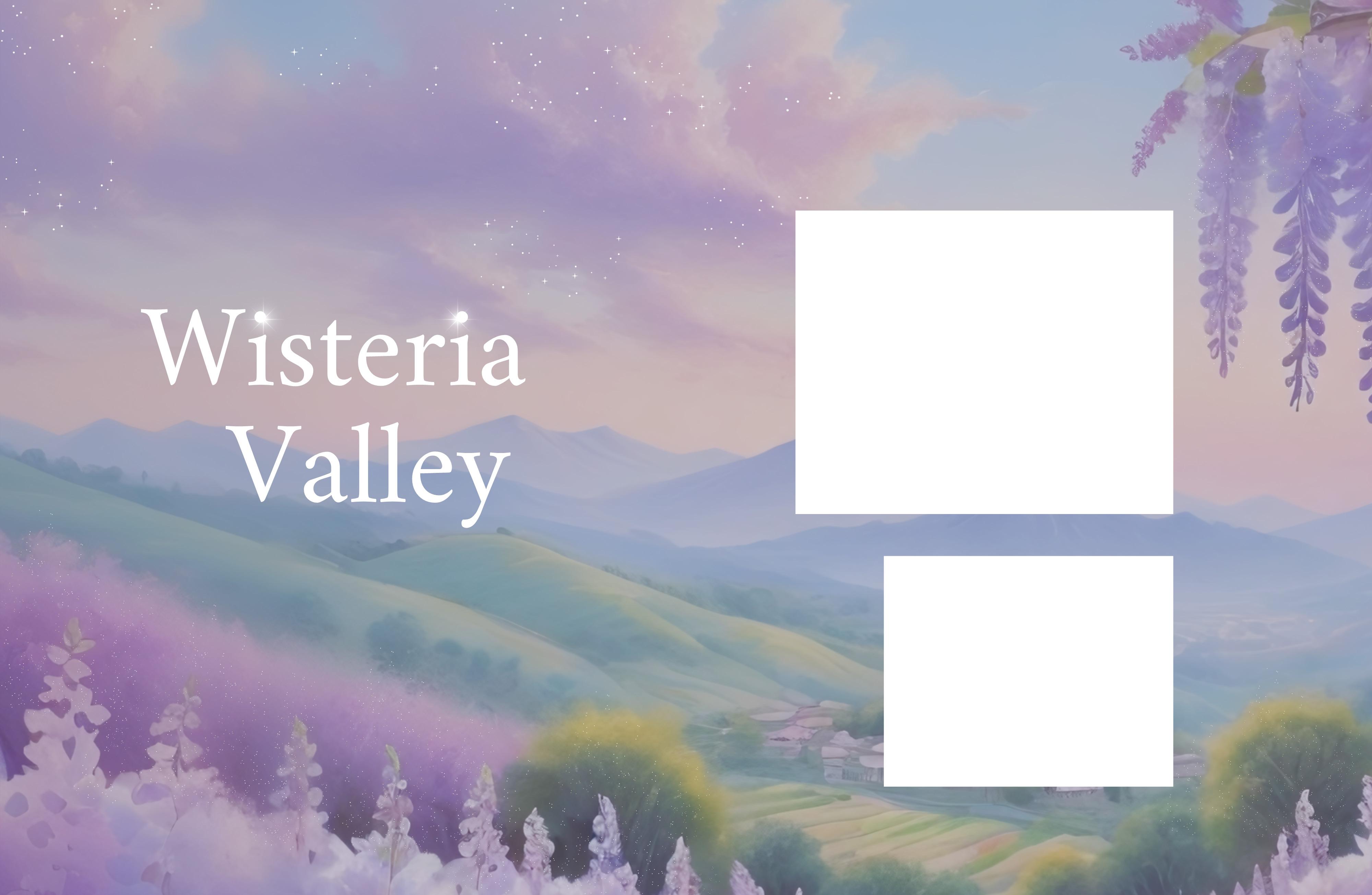

38 | spring 2024
by Ly Vu design/ Merita Thomas


The moonlight beams on the silver grass Wisteria petals draping the lavender fields, as the leaves sway with the brush of the wind, and the river waters reflect the pearl sky.
A place where the Earth feeds its children, never fearing the invasion of weeds.
A place where the grass bathes in the sunlight’s warmth, and the land thrives with its people, untouched by the clashing of metal.
Where the river is never questioned why it flows the way it does or why the soil is damp for most seasons. For the sun, the moon, the soil, the water does not need to change.
Our ancestors speak through lullabies, of fire dances during the summer solstice, of armed men and the blazing crimson trees and with the will of a thousand suns, they sing to me,
hold onto our songs, our clothing, the food which gave us life
For in the deepest valleys, In between the darkest crevice, a white lily blooms.



spring 2024 | 39
Disconnect
Things left unsaid lead to regret. But what about those lost in translation?
Three languages, Each with a finer filter.
Wandering eyes seeking acknowledgement, Hoping my dad can read between the lines.
Mujhe samajh mein sab aata hai, Bas bolne jaati hoon toh shabdh gayab ho jaate hain.
I know what I want to say but when I go to say it my words disappear.
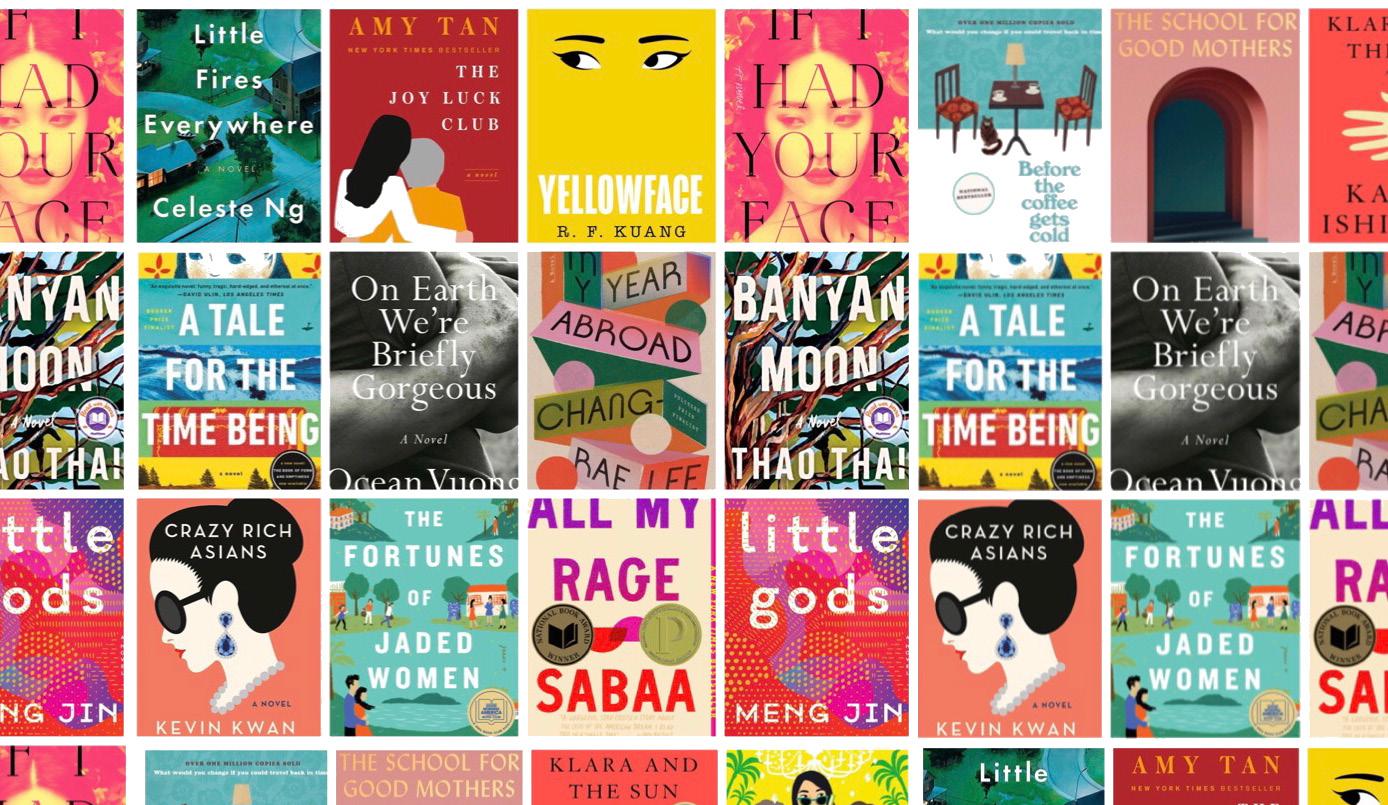




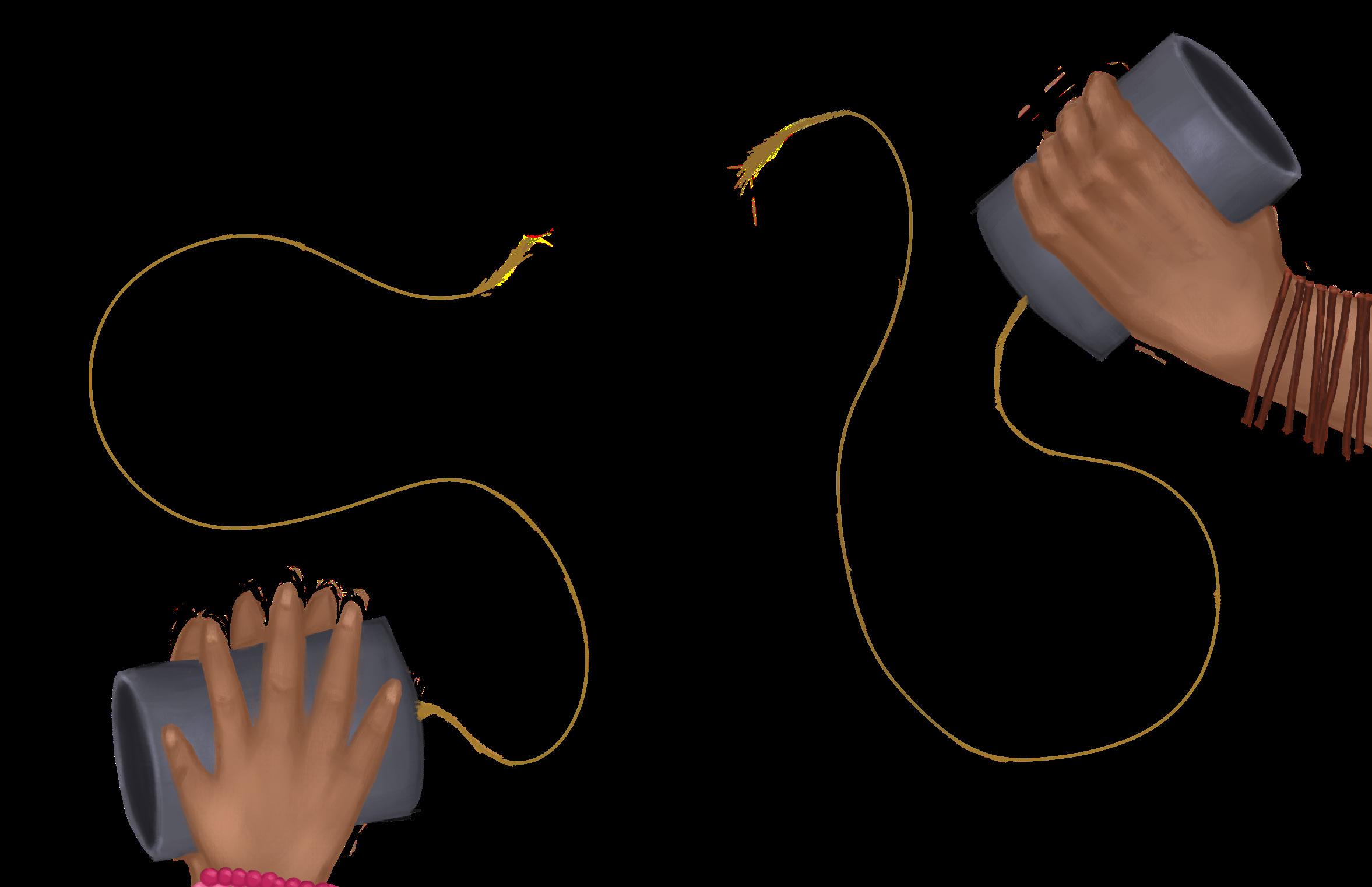 by Mridula Singh
by Mridula Singh
40 | fall 2023
design/Sayuri Gautam

A thoughtful paragraph, Becomes a caring sentence, then a generic question.
‘I really miss you, I wish I could be in India right now and be with you all.
How are you doing now,
I remember you told me your back was bothering you.
Do you think you will ever be able to come to the States?’
‘Mujhe aapki yaad aa rahi hai, kaash aapki tabyat theek hoti toh aap idhar aa paate.”
I miss you;
I wish you could come here
‘Theek aahav?’
How are you?
Inability to express emotions, Misunderstood for the lack of knowledge.




fall 2023 | 41
My mother hates my body so loudly.
Notes Slipped Into a Jewelry
It always came down to me being fat. One word that felt like judge, jury, and executioner in middle school.
Notes Slipped Into a Jewelry Box
At 13 years old, 14, 16, 19…
Now at 20.
That’s exactly how much I need to lose, 20 pounds.
Are these thoughts mine or my mother’s?
Trying to extract something that’s been so tightly bound feels futile, Like picking out corn stuck between your teeth.
“Do you want another bowl of food?”
In an old cabinet in my grandparents’ room, there’s a rusted metal box. It’s dull and bland yet holds a relic that has survived multiple generations. Coiled among the scattered bangles and mismatched earrings, there sits a mangalsutra. A golden necklace, designed in a pattern of gold pearls and black mustard seeds, the mangalsutra is the mark of a married woman and a reminder of her lifelong com mitment to her husband. As I shuffle through my family’s jewelry box, I wonder what my grandmother and mother were thinking when they first wore the
Aaji’sweddingday,December28,1970:
In an old cabinet in my grandparents’ room, there’s a rusted metal box. It’s dull and bland yet holds a relic that has survived multiple generations. Coiled among the scattered bangles and mismatched earrings, there sits a mangalsutra. A golden necklace, designed in a pattern of gold pearls and black mustard seeds, the mangalsutra is the mark of a married woman and a reminder of her lifelong com mitment to her husband. As I shuffle through my family’s jewelry box, I wonder what my grandmother and mother were thinking when they first wore the Aaji’sweddingday,December28,1970:
One is never enough, But two feels like too much.
Maybe I should stop eating altogether.
Todayismyweddingday,andagoldenmangalsutraadornsmyneck. Myhusband’smotherhasbeen savingupfundsforyearstogiftmewiththisnecklace.
Todayismyweddingday,andagoldenmangalsutraadornsmyneck. Myhusband’smotherhasbeen savingupfundsforyearstogiftmewiththisnecklace.
Trying to get me into a size zero taught me just how much I was worth, Zero. Nothing. Nothing at all. Another number to justify my lack of self-esteem.
Iamgratefulforthenecklace.ItisthefirstpieceofjewelryIhaveeverowned.Itisthesameshapeas thenecklaceswornbymymotherandgrandmother,asymbolofmaritalcommitment.Itrepresentsmy futureandgivesmeaningtowhoIwillbefortherestofmylife:awifetomyhusbandandthemotherof mychildren.
Iamgratefulforthenecklace.ItisthefirstpieceofjewelryIhaveeverowned.Itisthesameshapeas thenecklaceswornbymymotherandgrandmother,asymbolofmaritalcommitment.Itrepresentsmy futureandgivesmeaningtowhoIwillbefortherestofmylife:awifetomyhusbandandthemotherof mychildren.
Itisavowtoserveandcareforthem.AlthoughIbelonghere,tendingtoourhome,Iknowthatoneday, myrolewillshifttothatofaprotector.Oneday,Iwillholdpoweroverthewomanmysonmarries.Itwill bemyjobtoshowherwhereshefitsinmyfamily,andhowshemustbethethreadthatbindseveryone together.
Itisavowtoserveandcareforthem.AlthoughIbelonghere,tendingtoourhome,Iknowthatoneday, myrolewillshifttothatofaprotector.Oneday,Iwillholdpoweroverthewomanmysonmarries.Itwill bemyjobtoshowherwhereshefitsinmyfamily,andhowshemustbethethreadthatbindseveryone together.
Butrightnow,asawifeanddaughter-in-law,ImustlearntolistenanddoasIamtold.Idonotholdpow errightnow.Iamhandingmyselfovertothisnewfamily,justasmygrandmotherandmotherhanded themselves over.
Butrightnow,asawifeanddaughter-in-law,ImustlearntolistenanddoasIamtold.Idonotholdpow errightnow.Iamhandingmyselfovertothisnewfamily,justasmygrandmotherandmotherhanded themselves over.
The cultural demoralization of fatness has synonymized it to laziness. As if one’s body weight can be equated to how hard they work, How much effort they put in, And how deserving they are of regard. As if size equates to respect.
AyearafterAai’swedding,December21,1999:
They say, “Skinny women are respected.”
“Skinny women find husbands.”
AyearafterAai’swedding,December21,1999:
“Skinny women are loved.”
ThispastyearoflivinginNewJerseyhasseparatedmefrommylifebackhomeforsolongthatIhaveforgotten whatitwaslikelivinginamulti-generationalhousehold.Suddenly,Ihavetoputonamaskagainandresumemy role as a silent listener.
ThispastyearoflivinginNewJerseyhasseparatedmefrommylifebackhomeforsolongthatIhave forgottenwhatitwaslikelivinginamulti-generationalhousehold.Suddenly,Ihavetoputonamaskagain andresumemyroleasasilentlistener.
Fatness is disgusting. A dirty word. A quick and easy insult.





42 | fall 2023


fall 2023 | 43
Roots and Rituals: The Beauty of South Indian Weddings
Last October, I was a part of my aunt’s wedding. I remember all the events we attended, dressed in different colors of lehengas. I remember the smell of roses from the venue decorations and how the mehndi felt on my skin. I remember meeting people from my distant family whom I’ve never met before. Weddings are a symbol of love, and South Indian weddings are a celebration of cultural heritage, rituals, and traditions. The ceremonies involved in South Indian weddings happen over several days, each with its own significance. My family’s ancestry dates back to Tamil and Telugu origins, and therefore our culture is a mix of the traditions of both these regions. My family’s wedding traditions include the Haldi, Mehndi, Sangeet, Wedding, and finally the Reception.
ceremony in order to “cleanse” the couple and rid them of “Buri Nazar”, the Sanskrit term that stands for evil eye. This is believed to drive away all the “evil spirits” to ensure the couple’s prosperity. The Haldi ceremony is usually decorated with marigolds and yellow or orange decorations. Guests are usually expected to wear yellow as they bless the new couple, mirroring the color of turmeric. Turmeric is a “color of prosperity” and symbolizes hope for peace as the couple starts their new life together.
family get their mehndi done. There are sometimes traditions or games that are incorporated into Mehndi functions. One popular one is having the groom’s initials hidden in the bride’s mehndi, and then asking the groom to find his name amongst the patterns.
The Haldi ceremony is a prewedding ritual that takes place in most Indian weddings and is usually only completed by close family. During the pre- wedding ritual, the loved ones of the bride and groom apply haldi (turmeric paste) on their face and shower them with flower petals. Haldi is a paste made with turmeric powder, and a liquid usually yogurt, milk, or
Mehndi is a paste that is believed to be associated with positive spirits and good luck in Indian culture. The Mehndi is an intimate ceremony meant for the bride and groom’s close family. The ceremony involves a form of temporary body art, where intricate patterns chosen by the bride are applied to their hands and feet. The designs used for Mehndi usually have symbols of good health, or sometimes even Hindu gods including flowers, lines, dots, and spirals. The significance of applying Mehndi is to use natural herbal remedies to cool the bride’s body and relieve any stress. Some Mehndi functions also include music and danc-
The Sangeet is my favorite South Indian wedding tradition. The word Sangeet means ‘sung together’ in Sanskrit. The Sangeet is a ceremony that is the celebration of the union of two families. It is a colorful celebration filled with music, dancing, and performances. The Sangeet usually involves dance performances by the bride and groom, and their family and friends, followed by an open dance floor at the end. The Sangeet involves casual eating, dancing, and light-hearted speeches. Unlike religious ceremonies like the Haldi, the Sangeet is held mainly for the two new families to get to know each other and enjoy a relaxed night of fun.
The date of an Indian wedding is usually chosen based on how auspicious the day is to the couple. This date is usually chosen by an astrologer. The wedding is the main event




 by writer/Aditi Ragothaman design/ Ishita Sen
by writer/Aditi Ragothaman design/ Ishita Sen

tive, friend, and human you’ve ever talked to. The wedding day usually begins at the crack of dawn, and involves rituals performed in the presence of a Hindu priest. The centerpiece of the wedding revolves around the Thali, blessed by the guests at the wedding. The Thali is a traditional sacred golden necklace that is passed among the wedding guests for their blessings and wishes for their couple. The groom ties the Thali around the bride’s neck two times, and the final knot is tied by the groom’s sister. The three knots represent the three channels of acceptance for the couples: Manasa (thoughts), Vacha (speech), and Karmana (actions). The bride’s saree is then tied to the groom’s anga vastram (A shoulder cloth or stole worn by men in India as a part of traditional attire) as they walk around a sacred fire which symbolizes their prom ise to their oaths to each other during the beginning of their journey as a married couple. Some weddings have traditional games played by the bride and groom after all the rituals are complete.
The final ceremony which is a big party that marks the completion of the wedding is the Reception. The wedding is followed by a formal reception where the bride and group sit on stage. The guests are usually seated in chairs in the hall and listen to music or mingle
parathas. My favorite sweet, which is usually always served at weddings, is gulab jamun.
Indian weddings are known for their vibrant colors which are visible through the attire. Women usually wear brightly colored sarees, lehengas or salwars. Men usually wear kurtas and sherwanis. These outfits usually have intricate embroidery or gemstones. Outfits are usually worn with traditional gold or di-
traditions, ceremonies, and celebrations. They are elaborate, colorful, intimate celebrations of love and new beginnings. I’ve been to many Indian weddings, and I’m surprised by how different they are to each other. My favorite part about weddings is being able to celebrate with my family. The happy atmosphere, and sense of togetherness I feel at these weddings make them memories that will forever be special to me.
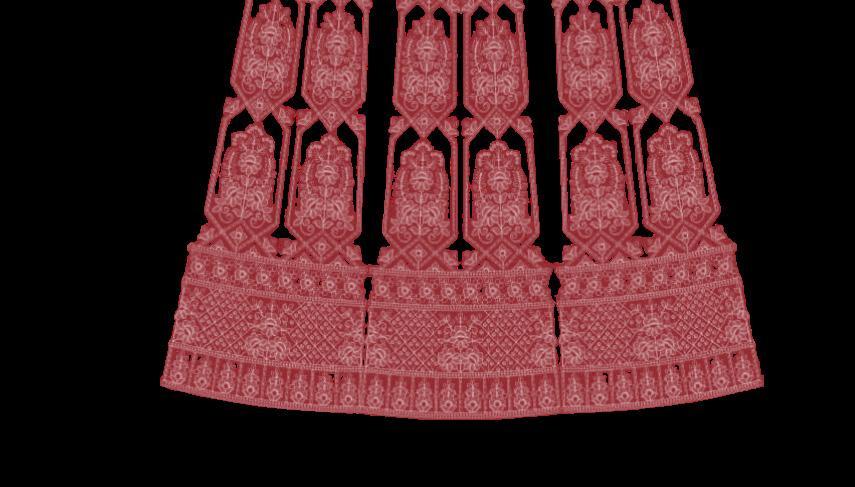




Cultural Appropriation in the Novel "Yellowface" Diversity or Doom?:
Thankfully, the 21st century has been more kind and embracing to the various cultures that are featured around the globe. Especially in the world of media, specifically books, there has never been a more diverse and welcoming catalog of content to consume. Tons of novels and fictional works are being created by those who are from underrepresented backgrounds. One of these creators is Rebecca F. Kuang, a Chinese American author who has written numerous bestsellers, including “Babel,” “The Poppy War Series,” and most recently, “Yellowface”. With her latest work, she has managed to explore the modern reception of diversity, and how people can use it ignorantly or maliciously.
“Yellowface” details the path of a young white author named June Hayward. After witnessing the death of her more successful colleague and friend, Chinese American author Athena Liu, she manages to get a hold of one of Liu’s unfinished manuscripts. Initially wanting to publish it in her friend’s memory, she ends up publishing the work as her own, along with rebranding herself as Juniper Song and appearing ethnically ambiguous with her author photo. Throughout the novel, we witness the backlash that she receives from her cultural appropriation, both online and in person, reading into her thoughts that constantly try to justify her actions.
With these things in mind, some people may ask: what is cultural appropriation? Looking at the Britannica definition of the term, cultural appropriation is, “when members of a majority group adopt cultural elements of a minority group in an exploitative, disrespectful, or stereotypical way.” This can include wearing cultural garments as a simple Halloween costume or adopting certain practices and traditions not related to your culture as an aesthetic or for social gain.
While the book is supposed to be a satire exposing the publishing industry, it does make the average reader wonder about the state of cultural appropriation today. Does it still hold an active presence in our society, and what is considered cultural appropriation in media? With the promises of diversification being delivered, are they done with the right intentions? Analyzing the novel further, we will delve into these questions to understand the state of diversity and representation in the modern age.
At a glance, many readers had their interesting thoughts on the book. Receiving a 3.89 out of 5 stars on Goodreads, “Yellowface” has been generally well-received. “I think the book overall did a good job exposing the inner
workings of the publishing world as well as the struggles many aspiring authors may encounter,” said Stuart Avvampato, one of the many readers of this book. “I loved ‘Yellowface!’ I think it’s a novel that might rub people the wrong way, but I saw it as a book to (lightheartedly) make fun of the book community,” said Sydney Sedloff, another reader. She has a point, as some people do not enjoy certain aspects. Cindy Pham, an online creator who is infamous for her book and movie reviews, had differing opinions. In her video, “The problem with ‘Yellowface’ by RF Kuang: my thoughts on race, class, and the publishing industry,” she summarizes her thoughts on the book. “Yellowface felt very chronically online rather than reflective of the real-life publishing industry,” she said, highlighting the numerous references to Twitter and the online discourse in the novel.
Before delving into appropriation, an interesting point to tackle first is diversity, especially in the entertainment world today. While we have seen better representation in media in recent years, it is still a controversial issue on both sides, especially with the idea of using certain people as “tokens,” to show that they “care” about minority voices without actually putting in effort to diversify the field. “I think that there definitely is a push to hire or secure a handful of ‘token races’ in order to play into the market where there are demographics that would desire that. And although I believe diversity hires could be helpful, I don’t think that the way that media industries today are handling it [is] being carried out in a beneficial way. Instead of being merit-based in its hiring process and allowing for smaller actors/writers/ etc to enter the limelight, it seems as though a lot of media industries… tend to try to secure the small handful of already successful/token figures to hire instead,” said Avvampato. Sedloff goes into further detail on the potential motivations behind these industries. “I don’t feel that the publishing houses and other companies are doing it out of the goodness of their hearts. They’re doing what June did. They realize that they can a lot of money by supporting minorities. They know if they don’t diversity, their income will suffer for it.” With powerhouses prioritizing money and their reputations, minority communities see these kinds of gestures as pandering and ingenuine, whereas many non-minority members, like June in the novel, feel as if these industries only care about minority voices and push theirs away. “There are white authors who still believe that publishing favors people of color and that white people are becoming more of a minority and they are the ones that are being marginalized from having their stories published…” Pham said regarding the publishing industry. However, she immediately debunks this claim by


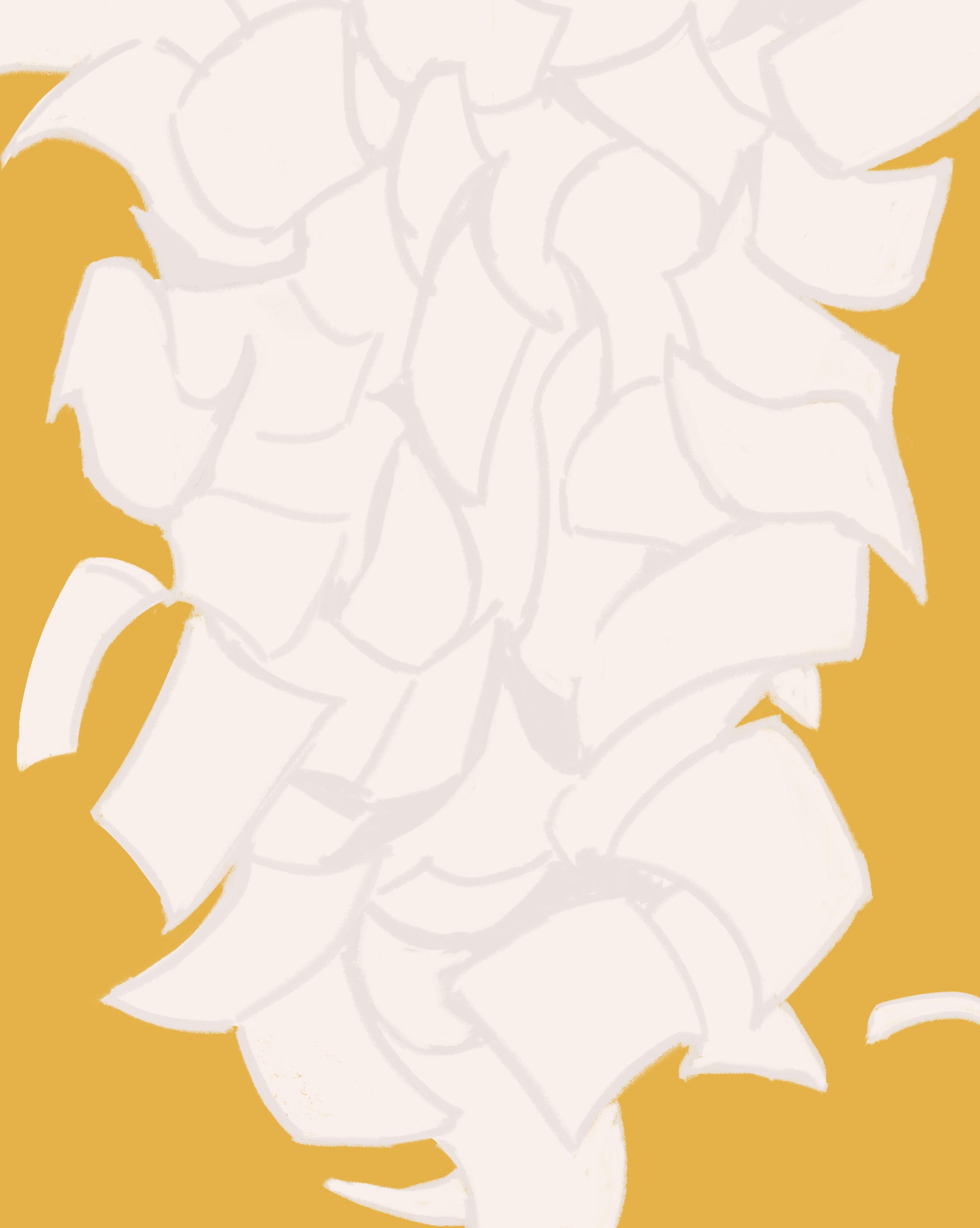
 by Jolina Jassal design/ Arianna Flores
by Jolina Jassal design/ Arianna Flores
46 | spring 2024
providing author demographic statistics from Wordsrated. com, which shows that roughly 75% of authors within the U.S. are white as of 2021. While minority percentages are growing, they are still heavily underrepresented, therefore throwing any opposing claims right into the garbage.
In terms of its dealing with cultural appropriation, there were mixed opinions and interpretations of its handling. While Avvampato found some accuracies in the novel compared to the real world, Sedloff stated that it wasn’t necessarily “black or white,” with a singular action not being appropriation but the entire process being appropriation. When trying to analyze this subject, it is not uncommon to see many people struggle with what’s considered cultural appropriation and what’s not. The author, R.F. Kuang, even added her thoughts on this matter when she was being interviewed by the New York Public Library, describing how formatting the book was intentional with the modern way we discuss this issue. “‘Yellowface,’ is an interesting contrast between style and content, because I’m trying to unpack all of these difficult questions about cultural appropriation and identity and the commodification of marginalization, but I’m using this style that’s sloppy and easy and reductive because that’s how discourse is on Twitter,” she said. “But I was trying to use this reductive mode of narrative to unpack something that should not be so easily reduced.” Especially with the way that we communicate today online, it is easy to jump to conclusions on certain controversies. While it can be capable of holding people accountable, it can be harsh, and false accusations can easily stir in the air. It certainly doesn’t help those who are confused about the limits of cultural appropriation. Even with solid definitions, interpretations of specific instances can vary from one person to the next. However, the ultimate determiner of cultural appropriation is whether something is being used with genuine respect for the culture.
"I don’t feel that the publishing houses and other companies are doing it out of the goodness of their hearts... They realize that they can [make] a lot of money by supporting minorities. They know if they don’t [support] diversity, their income will suffer for it."
While tons of people in the novel were offended by June Hayward writing minority stories, readers had split thoughts on this topic, mainly when it comes to authors who are part of the majority writing minority characters. However, the main consensus was that as long as proper research and care go into accurate representation, it’s possible and acceptable. “Authors are absolutely capable of accurately portraying minorities correctly. The same thing happens with mental health struggles, class/wage differences, gender differences, etc. What is required of those authors though is more research,” said Sedloff. “I do believe that these authors are in fact capable of accurately and appropriately portraying these topics. I believe the hurdle would be higher for these individuals due to the subtle nuances that would be hard to portray without being of that culture/minority demographic, but I do believe that it is possible,” said Avvampato. There are numerous examples where authors succeed and fail in this venture, such as Lisa See winning numerous awards for novels like “China Dolls,” and “Shanghai Girls,” and only being ⅛ Chinese from her great grandfather’s side, and there’s Naomi Novik with her novel “A Deadly Education,” which had controversial portrayals of minorities, mainly involving fantastical world-building aspects that highlighted negative features. While this wasn’t her intention, the lack of care and awareness caused numerous communities to be offended.
- Sydney Sedloff
Despite its praises and criticisms, “Yellowface” is a reflection of the progress and setbacks that we have made over the past few decades in media. While we have made great strides in diversity and representation in the media industry, we still have a long way to go before it is considered a truly safe space. Not only do companies need to prioritize diversity as a moral issue rather than a cash grab, but people also need to be educated on the signs of cultures being represented inaccurately. With constant jumping to conclusions and a lack of confidence in these sensitive issues, it is essential to put everyone on the same page. Putting in the work on both ends is essential to making actual progress toward cultural understanding and appreciation, not just in the media that we consume, but in our daily lives.



spring 2024 | 47
Chic & Covered
The struggles Between modesty & modern fashion trends
Cultural influence has long played a role in fashion, especially as social and religious values have evolved. For centuries, Hindu women wore saris without blouses. British colonization of the Indian subcontinent, however, meant that South Asians were encouraged to follow Western values — most distinctively through fashion. The Victorian-era style of rigid bodices and multilayered petticoats conflicted with sleeker South Asian saris that draped the body and selectively exposed skin. This clash of styles led to women wearing blouses and petticoats underneath their saris, forming the modern-day iteration of the sari.
A Tale of Two Cultures:
The cultural dichotomy of Western and South Asian fashion in the past is reflected in how South Asian Americans and immigrants perceive modesty. Firstgeneration immigrants are presented with the unique opportunity to define how they express modesty. While their parents were raised with a singular culture — and subsequently a singular standard of modesty —
South Asian Americans exist in a new blended culture, combining the South Asian values their parents taught them and the Western ideals held by the society they interact with.
Nandini Patel, a second-year student at the University of Florida, described how despite her parents immigrating and integrating into Western culture, she still grew up with many of the Indian values that they were raised with. Patel also noted how ethnic and religious diversity among South Asian women impacts their perceptions of modesty. “Being Hindu, that means my version of modesty is different compared to, say, a Muslim girl. Some parts of my body I can show and still have it be counted as modest, but for other religions it may not be counted as such.” Commonly with Asian parents, enforcing these modest values onto their children is done to uphold the ones that they were raised with. Interestingly, though, the root of these expectations is not just religious but also societal.
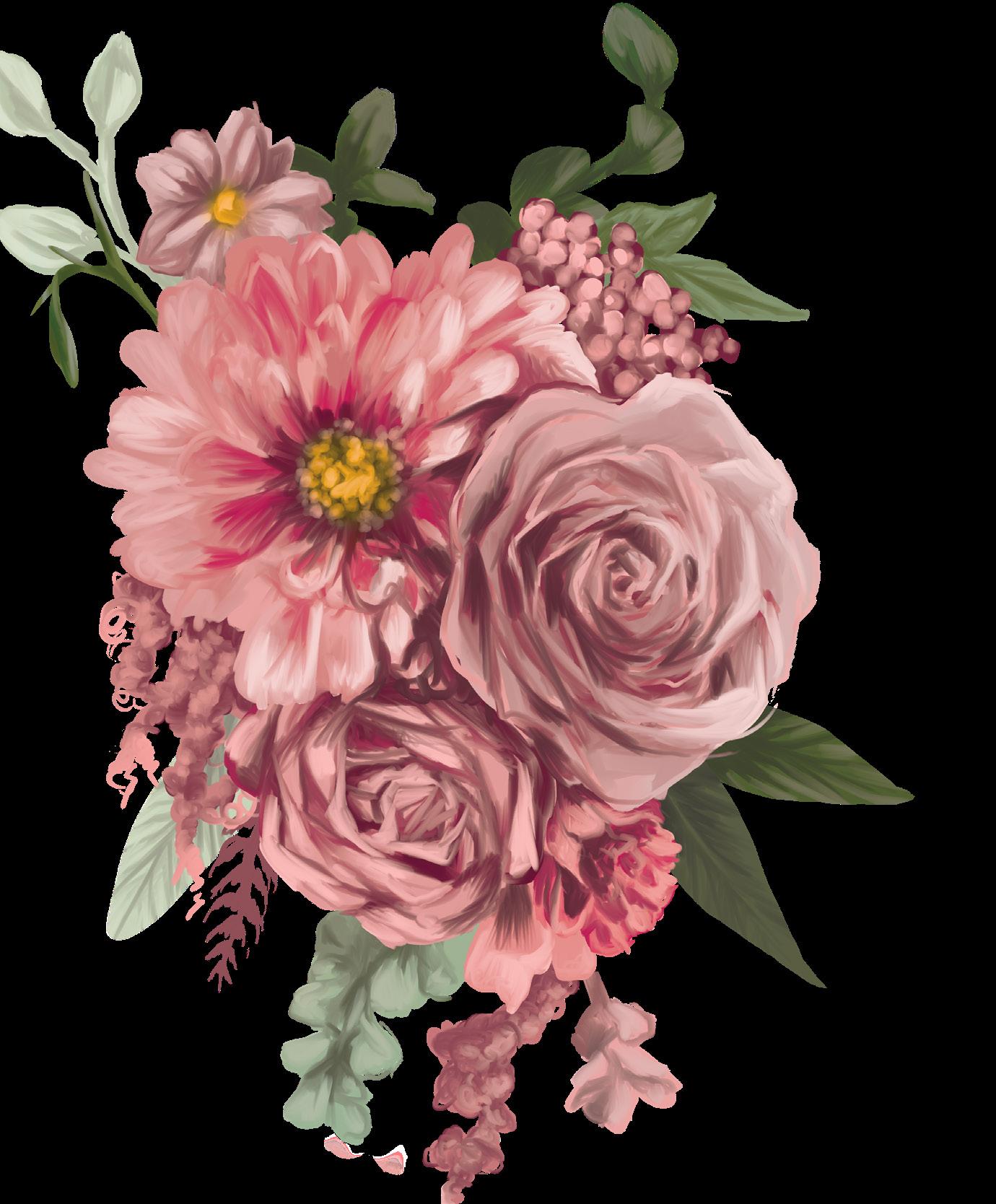
The Urdu/Hindi phrase “Log kya kahenge?” — or “What will people say?” — is a prominent social idea that other people will always have an opinion on a person’s life and decisions. This idea is especially important to South Asian women, particularly when it comes to a woman’s attire. Many of the expectations of modesty that are upheld by South Asian parents result from fear that their children, especially their daughters, will be judged for the modesty or immodesty of their outfits by the “aunties’’ and “uncles” of the community. But even women that strive for modesty still find their attires assessed, down to the very last detail.
A hijabi Bengali student, who chose to remain anonymous, expressed her struggles with appearing modest to the community. “I get so paranoid if my ankles are showing because my parents taught me that people will say stuff if you’re not modest enough. I think within South Asian culture too, it’s so hard to be modest and also adhere to South Asian culture specifically because people are so picky and nit-picky about everything.”
Even as a hijabi, a South Asian woman cannot hide from the prying scrutiny of “the community” and their everexacting measures of modesty. Hijabi and non-hijabi South Asian women alike find themselves covering up more in front of their community out of fear of judgment, scared to be seen as anything less than a perfect South Asian daughter.
However, with many South Asians assimilating to Western cultures, some South Asian American women are also scrutinized by other South Asians for being too conservative. The anonymous hijabi student detailed her own stories where other muslim bengali women questioned her decision to take the hijab, especially since she began at a young age.

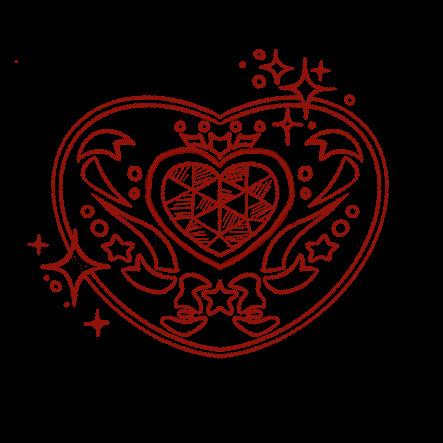

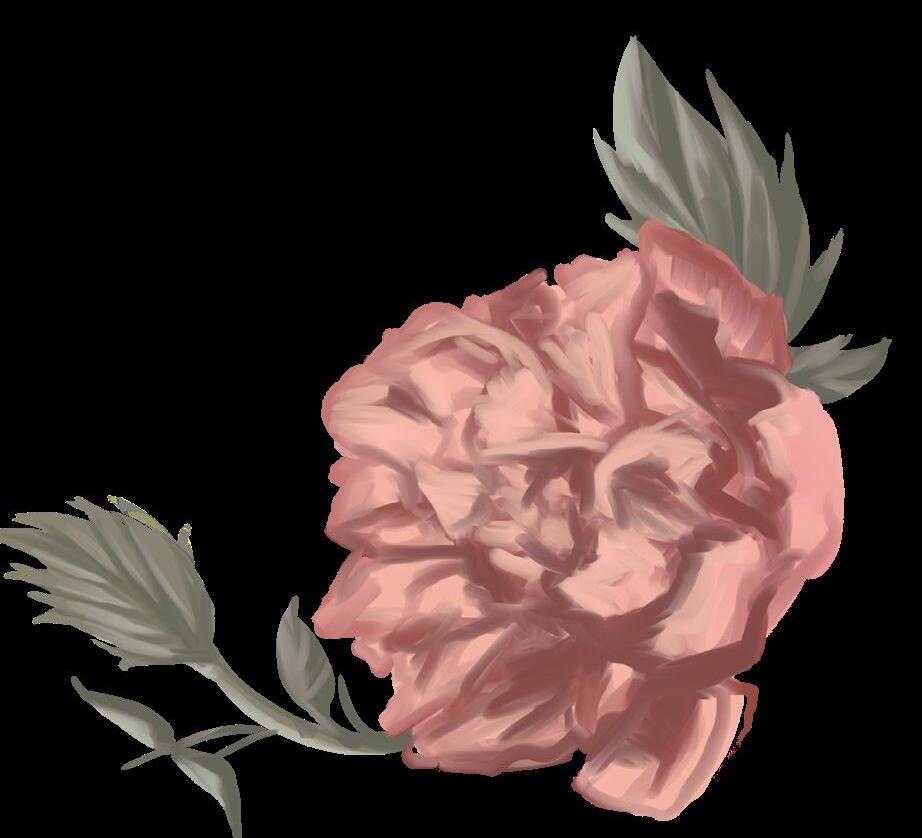



 written by/ Zainab Nawaz photos by/ Julia Lin design by/ Jennifer Jia models/ Zarin Ismail, Deshna Soni
written by/ Zainab Nawaz photos by/ Julia Lin design by/ Jennifer Jia models/ Zarin Ismail, Deshna Soni
48 | spring 2024
Modesty in Fashion
“Even as Bengalis, people would say, ‘You don’t have to wear the hijabi, you’re so young, live your life.’ I’d get comments like that and I never understood why.”
The misconception that dressing modestly means that a person is reserved or oppressed takes away the agency and individuality of choosing to dress modestly.
Despite growing up with a mixed culture of Eastern and Western values, the ebbing and flowing expectations for how modesty is defined hinders South Asian American women’s ability to explore their own relationships with fashion. Being perceived as too modest by some and not modest enough by others makes it difficult for women to exist in — or even define — a middle ground on the modesty
Modems of Modesty:
Trying to find pieces that are both stylish and modest in a Western society is easier said than done. With modern trends favoring more revealing styles such as crop tops and mesh fabrics, it can be hard for women to find items that fit their ideals of modesty. Because they don’t appeal to a niche audience, modest pieces also tend to be costly. These barriers in accessibility can make it more difficult for modest-dressing women to express their personal style.
Online shopping has alleviated some of the struggle of finding pieces that work. Digital retailers can supply wider varieties of styles and silhouettes, providing women more options to choose from. Modest dressers also implement layering to give revealing pieces more coverage and create more dynamic silhouettes with their outfits.
religion significantly influences culture, the average consumer still opts for modest pieces.

South Asian American women also turn to cultural clothing to express their modesty as the pieces are often already modest. Cultural fusion fashion pairing South Asian kurtas with American blue jeans or lehengas with Western tops allow women to express both modesty and culture. This mixed fashion has gained popularity due to social media and increasing South Asian representation in Hollywood.
Alternatively, Western media has also influenced how South Asian fashion brands portray modesty. The past decade has shown increased boldness in South Asian fashion, but in countries like Pakistan, where
Sobia Hamid, Business Head of Bridals and Couture for Maria B, discussed how interpretations of modesty differ between high fashion and mass market clothing in Pakistan. Elite, more niche brands have favored less modest designs, becoming more experimental and international with their looks. The mass market, however, has shifted towards more modest attire. “You see brands like Khaadi, Sapphire, Generation — bigger brands in Pakistan who are dominating the mass market — they have gone towards making sure their clothes and shoots are more modest. Out of their whole collections, maybe two outfits will be sleeveless. Otherwise, they’re all full sleeves.” Even on an industry level, the expression of modesty is subjective and ever-changing. Finding a personal style is hard enough with brands and media dictating the current trends. Dressing modestly presents its own challenges, but often to beautiful and stylish results. Whether one buys from more conservative brands or innovates upon modern trends, the potential for modest fashion is boundless.
South Asian American women will be judged no matter what they wear. Though that may deter some, the reality is that fashion provides an avenue of self-determination. Dressing the way they want and embracing their personal style means that South Asian American women get to be in charge of their own narrative. Be it modest, South Asian, Western or modern fashion, the confidence of feeling good in an outfit is one that no auntie or trend can take away.
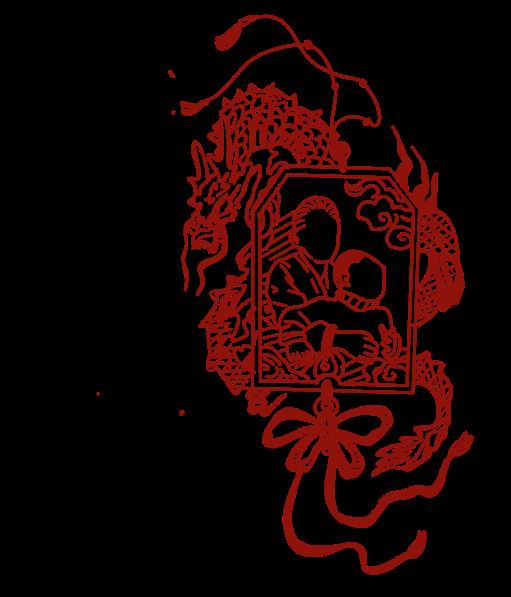

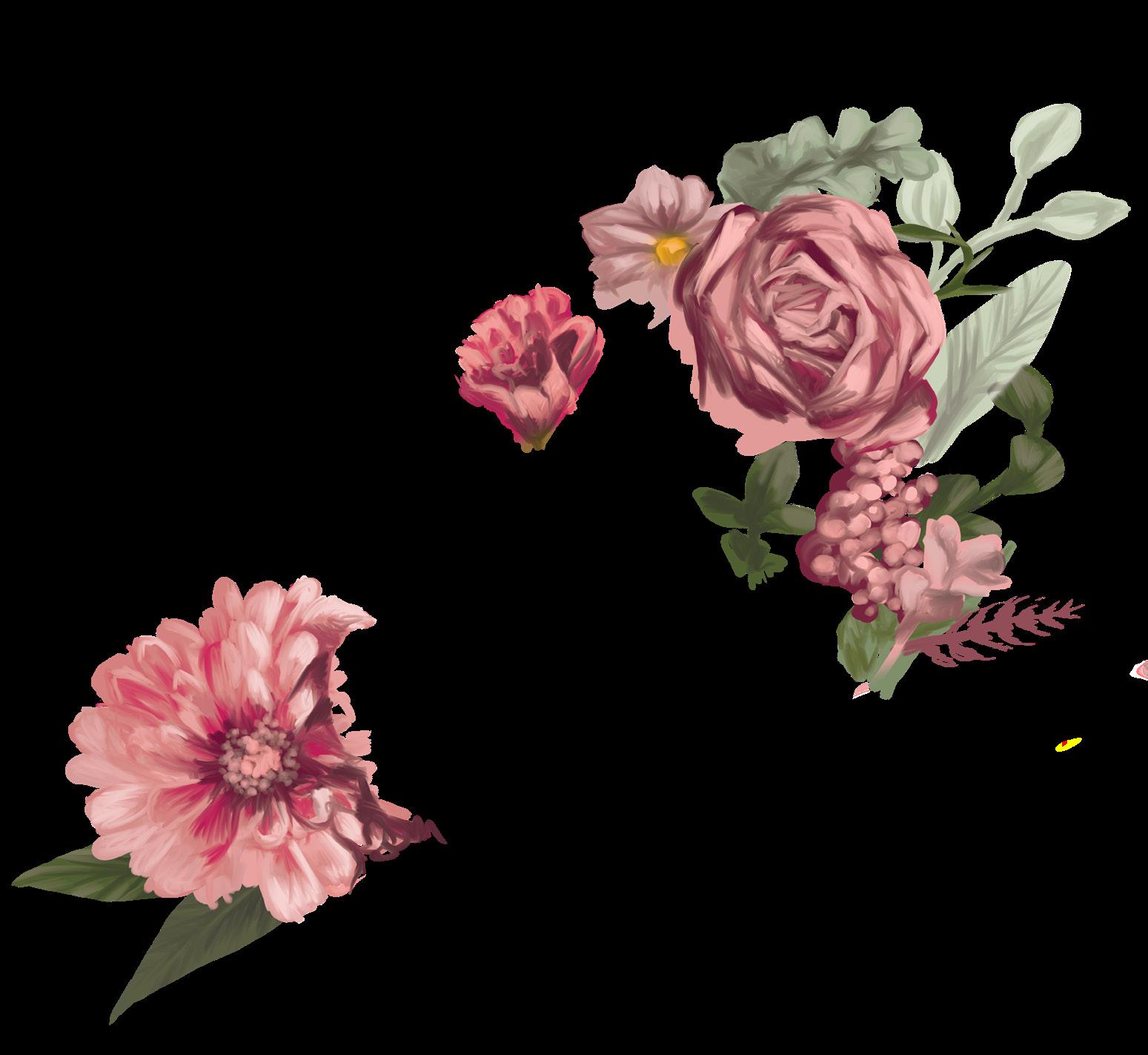



spring 2024 | 49
Steeped in CultureHUMANS OF SPARKS
The warm, flavorful aroma of spiced tea or the cold, refreshing sip of iced tea…

In every Asian household tea, otherwise known as cha, chai or chah, is a beverage steeped in tradition. Seemingly a staple in any Asian household, one cup of tea is needed every day whether it be hot or cold. In the Western world, coffee and tea is often drunk solely for the caffeine boost to get you through the workday. In contrast, for many Asian cultures, tea is drunk either for its health benefits, refreshing qualities, or the communal experience of enjoying a cup
taste. Today, many Chinese couples participate in a Chinese wedding tea ceremony. This is a tradition where the bride and groom serve tea to their esteemed elders from both sides of the family such as parents, grandparents, and elder relatives. The couple receives gifts and well wishes, unifying both families.
A story to TELL
Every Asian culture, from South Asia to East Asia to Southeast Asia to Central Asia, has a unique tea culture. Tea can be enjoyed as a simple refreshment, a drink for health, comfort, or another occasion to spend time with loved ones. In Asian cultures, the most common types of tea are green, black, oolong, white, yellow ginseng, and genmaicha. However, the preparation of these teas vastly varies from culture to culture. The tea plant originated in regions around southwest China, Tibet, and Northern India. So, our first destination of interest- China.
चाय (chai)

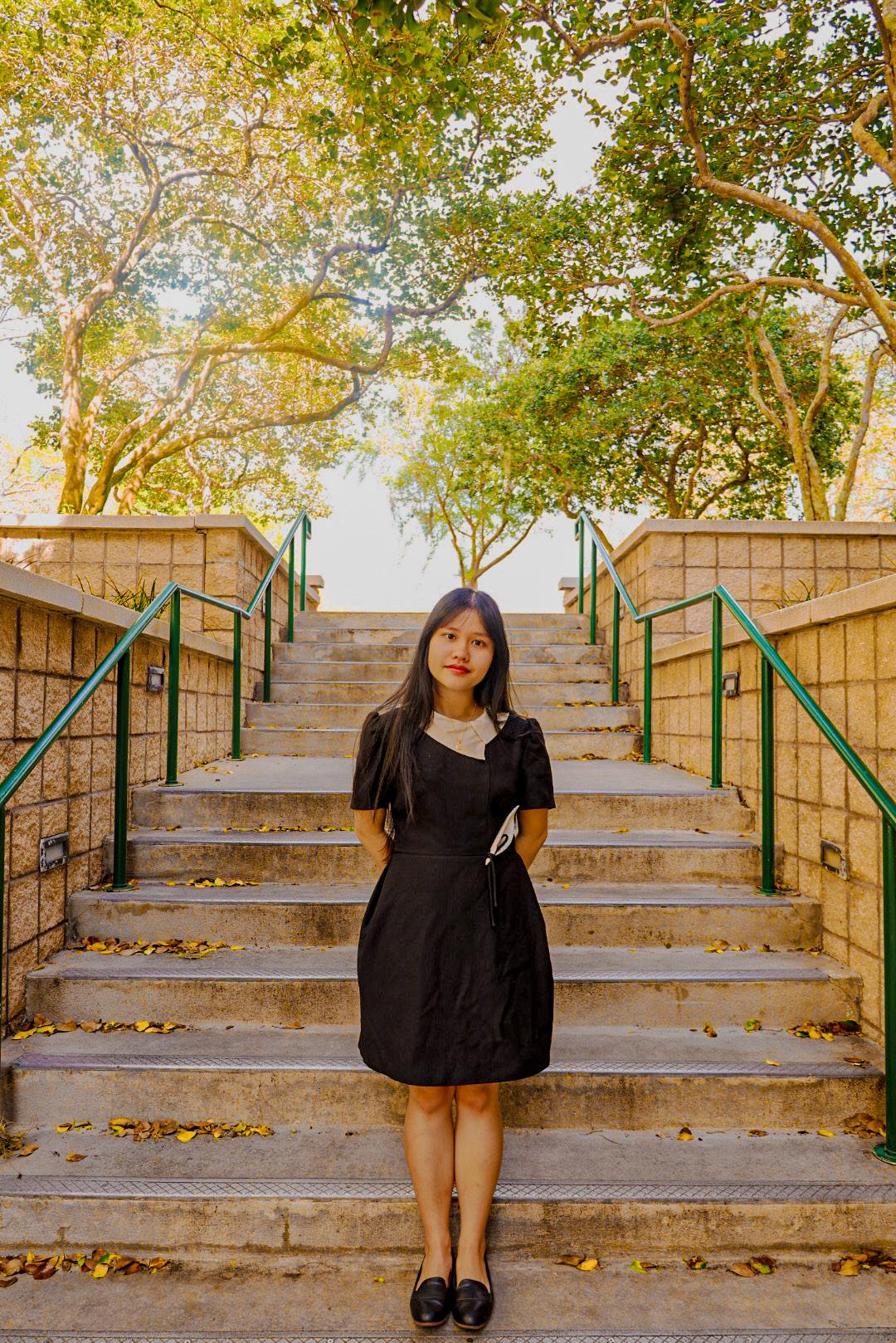
We are Sparks

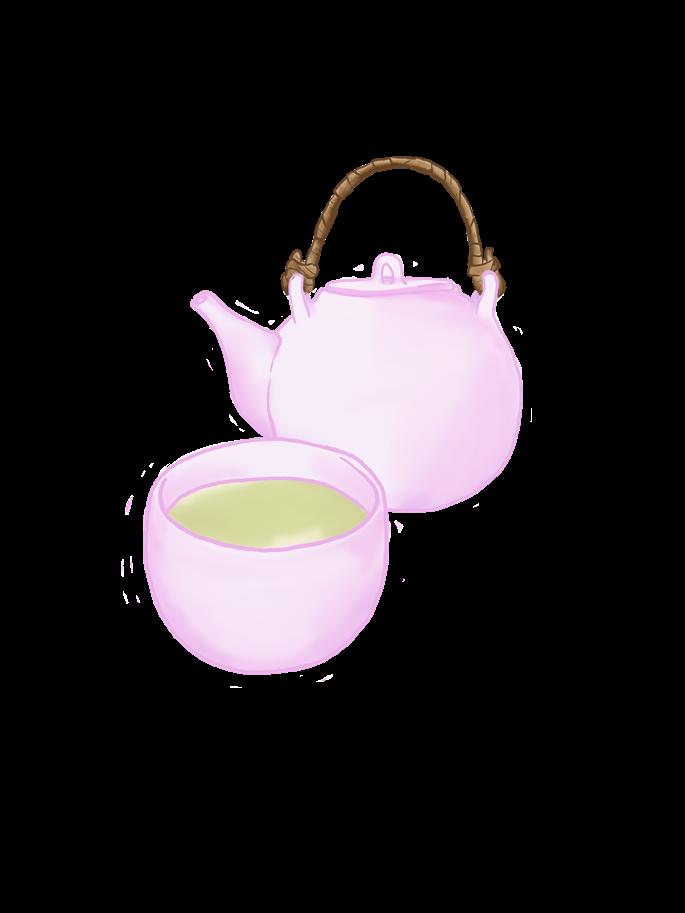
An experience to REMEMBER
In ancient China, the most common tea to drink is green tea. Through the experience of drinking tea, one cultivates the mind and improves moral integrity. Tea represents elegance, harmony, and grace. The tea plant is held in high esteem for its medicinal properties in reducing inflammation and boosting immunity, energizing effect, close ties to nature, and desirable
 by Khoa Hoang
by Khoa Hoang
n India, the tea plant grew in the Assam region for centuries; however, it was seen as a herbal medicine rather than as a recreational beverage. This changed under British colonization. In the 1830s, the British East India Company became concerned about the Chinese monopoly on tea and noticed the existence of the Assamese and Ceylon tea plants. By 1900, the tea consumption landscape in Great Britain had dramatically shifted. Only 10% of the tea consumed in Great Britain originated from China, a significant decrease from the 90% in 1870. This change was primarily due to the rise of tea plantations in India and Ceylon. Today, chai is made by brewing black tea with milk, water, sugar, and a blend of spices. These spices include cardamom, cinnamon, ginger, and even mint. Every South Asian household has a different blend of spices, sometimes a closely guarded family secret. It is enjoyed in South Asian households daily with biscuits and spicy fritters.
Written By Serena Bhaskar Design
Tra Nong and Tra Da
In Vietnam, tea is a beverage sipped as often as water. From morning to evening, ‘Tra Nong’ (Hot Tea) or ‘Tra Da’ (Iced Tea) can be made from the variety of teas enjoyed in each region such as white, green, oolong,
 By Anisha Paudel & Amreen Naveen
By Anisha Paudel & Amreen Naveen
50 | spring 2024
STATEMENT
The University of South Florida chapter of Sparks Magazine has come together to acknowledge the political attacks on not just the Asian-American students, but all communities. It has become more difficult to voice our opinions and be free, especially for marginalized populations. We applaud the commendable APIA inclusivity and representation at the University of South Florida. In the past two years, we have battled the COVID-19 pandemic and the Asian American hate crisis. Our chapter has conducted workshops and fundraisers to highlight the Stop AAPI Hate campaign. Additionally, we continue spreading awareness about APIA issues through our own initiaitves and collaborations with other Asian American Organizations.
The University of South Florida is a diverse university that promotes all kinds of cultures and communities. With over 20 student organizations that celebrate our Asian culture, we call upon the University of South Florida to continue to make our campus a safer space for young Asian-Americans to express themselves freely and without judgment. In the spirit of showing solidarity amongst Asian organizations on campus, the Universiy of South Florida Chapter of Sparks Magazine is proud to be collaborating with USF Minority Students in Communication Sciences and Disorders (CSD) to further spread awareness of Asian American advocacy and representation.
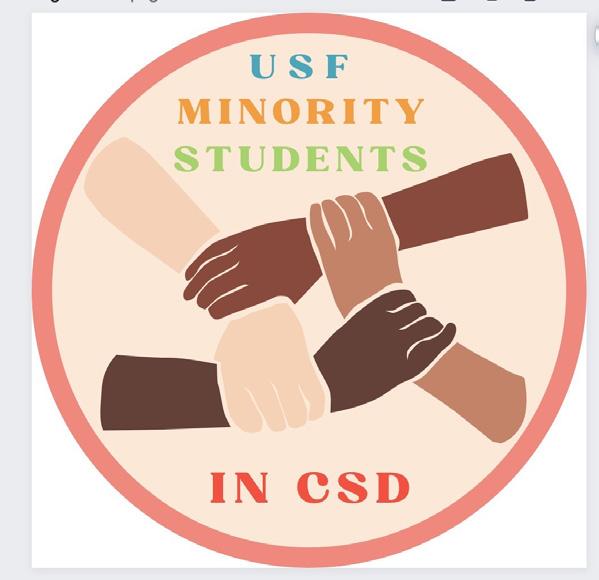

spring 2024 | 51

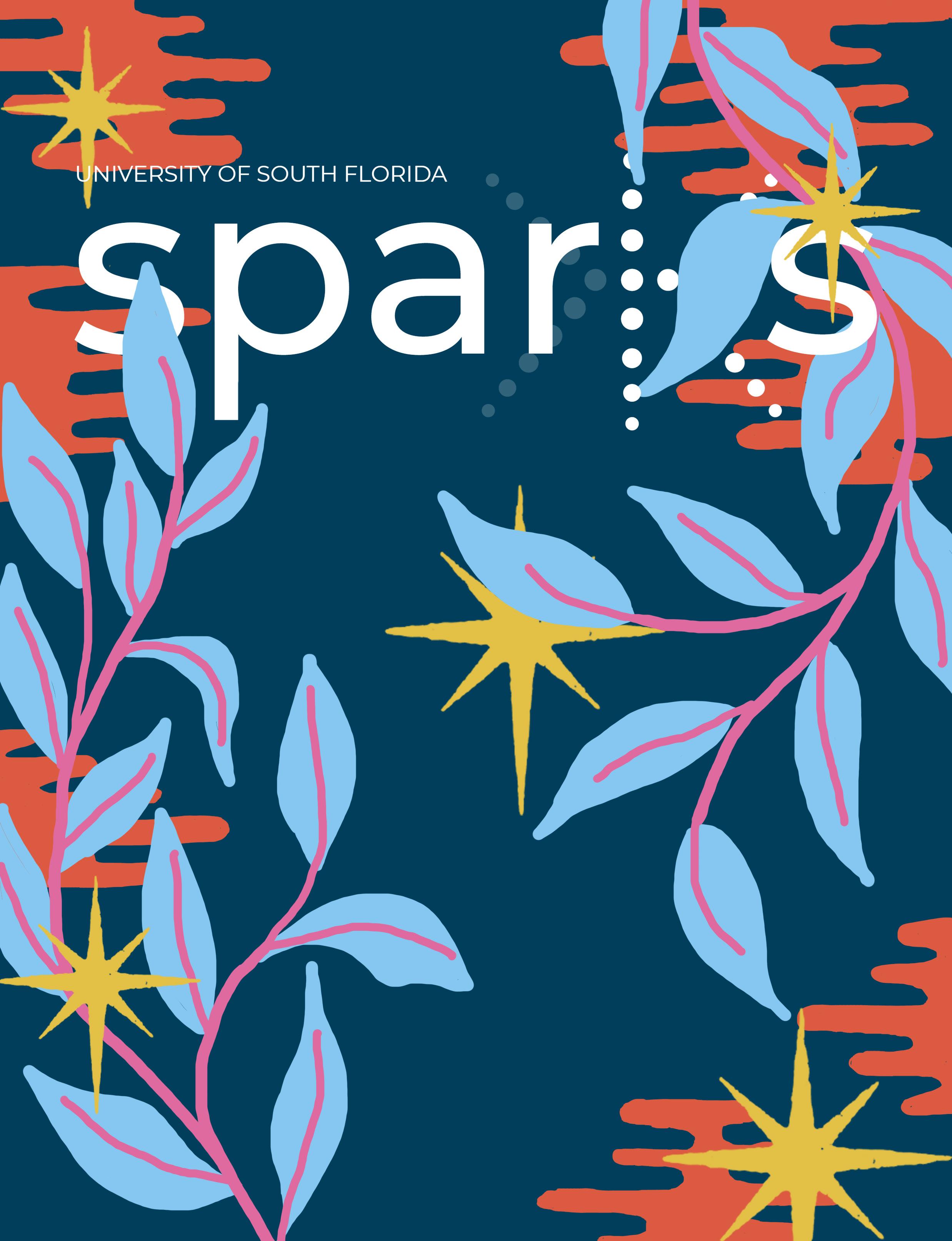







































































































 by Writer Vaidehi Persad design/ Designer Amreen Naveen
by Writer Vaidehi Persad design/ Designer Amreen Naveen
































 by
by







 writer and designer Nimrit Doad
writer and designer Nimrit Doad
























 by Ramya Subramanian
by Ramya Subramanian


 design/ Merita Thomas
design/ Merita Thomas






 Designed By Merita
Designed By Merita





 by Quyen Tran design/ Dan Pham
by Quyen Tran design/ Dan Pham
























 by Reagan Huynh
design/Daniela Kate Abaquita
by Reagan Huynh
design/Daniela Kate Abaquita






 by
Written and Designed By Merita Thomas
by
Written and Designed By Merita Thomas

 Mridula Singh
Mridula Singh









 writer/Yasaswi
writer/Yasaswi
















 by Mridula Singh
by Mridula Singh












 by writer/Aditi Ragothaman design/ Ishita Sen
by writer/Aditi Ragothaman design/ Ishita Sen




 by Jolina Jassal design/ Arianna Flores
by Jolina Jassal design/ Arianna Flores









 written by/ Zainab Nawaz photos by/ Julia Lin design by/ Jennifer Jia models/ Zarin Ismail, Deshna Soni
written by/ Zainab Nawaz photos by/ Julia Lin design by/ Jennifer Jia models/ Zarin Ismail, Deshna Soni







 by Khoa Hoang
by Khoa Hoang
 By Anisha Paudel & Amreen Naveen
By Anisha Paudel & Amreen Naveen


